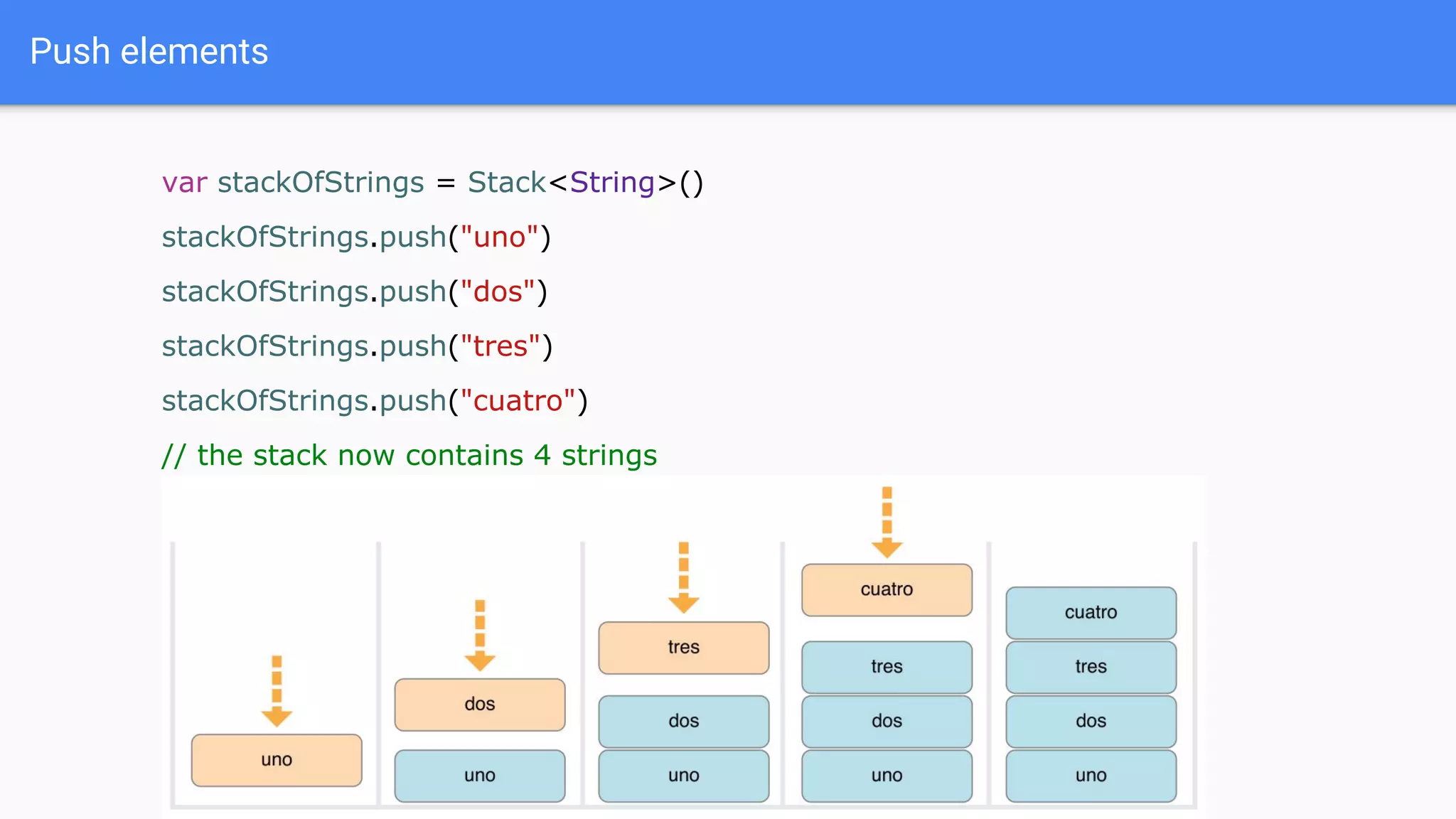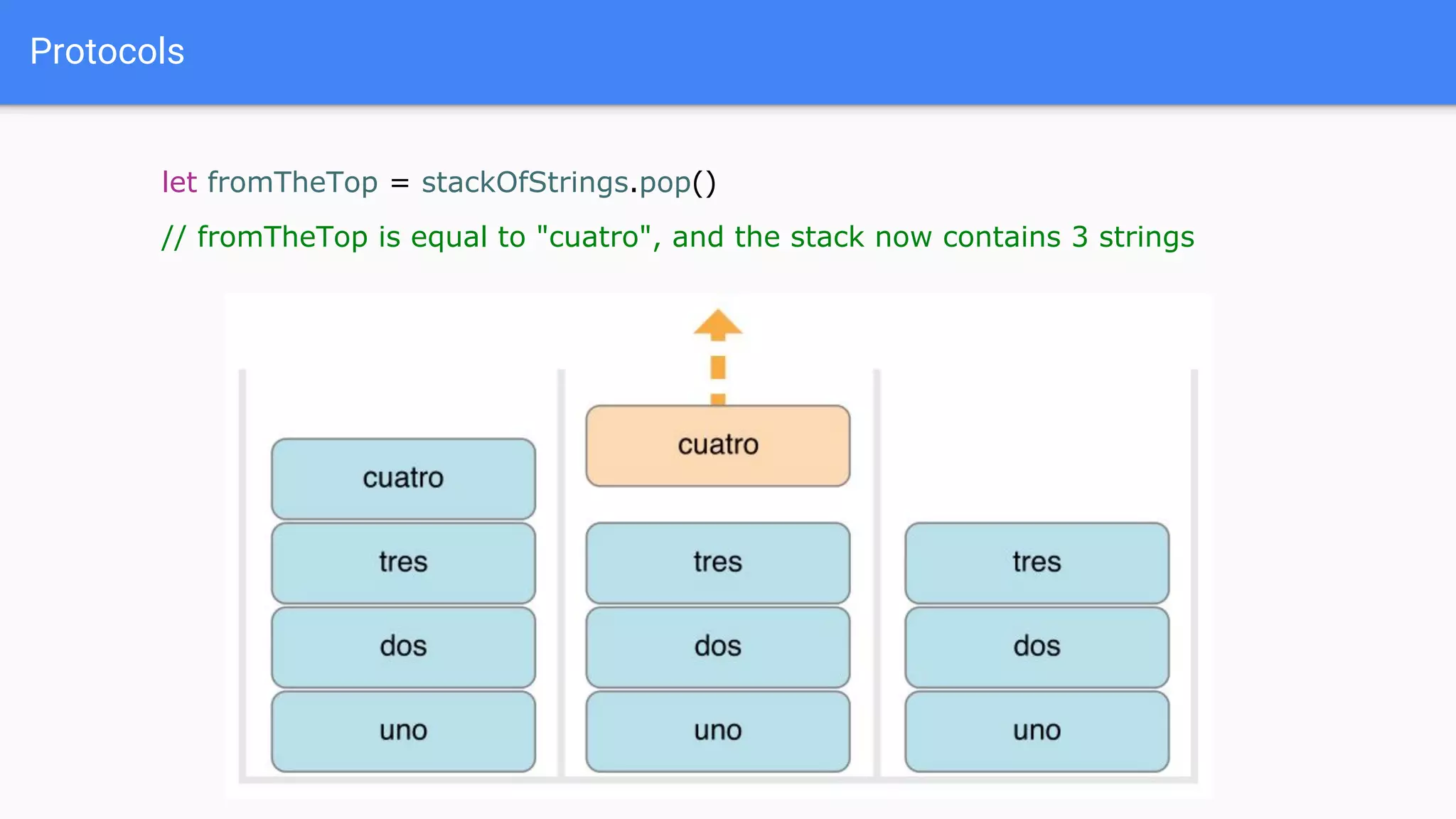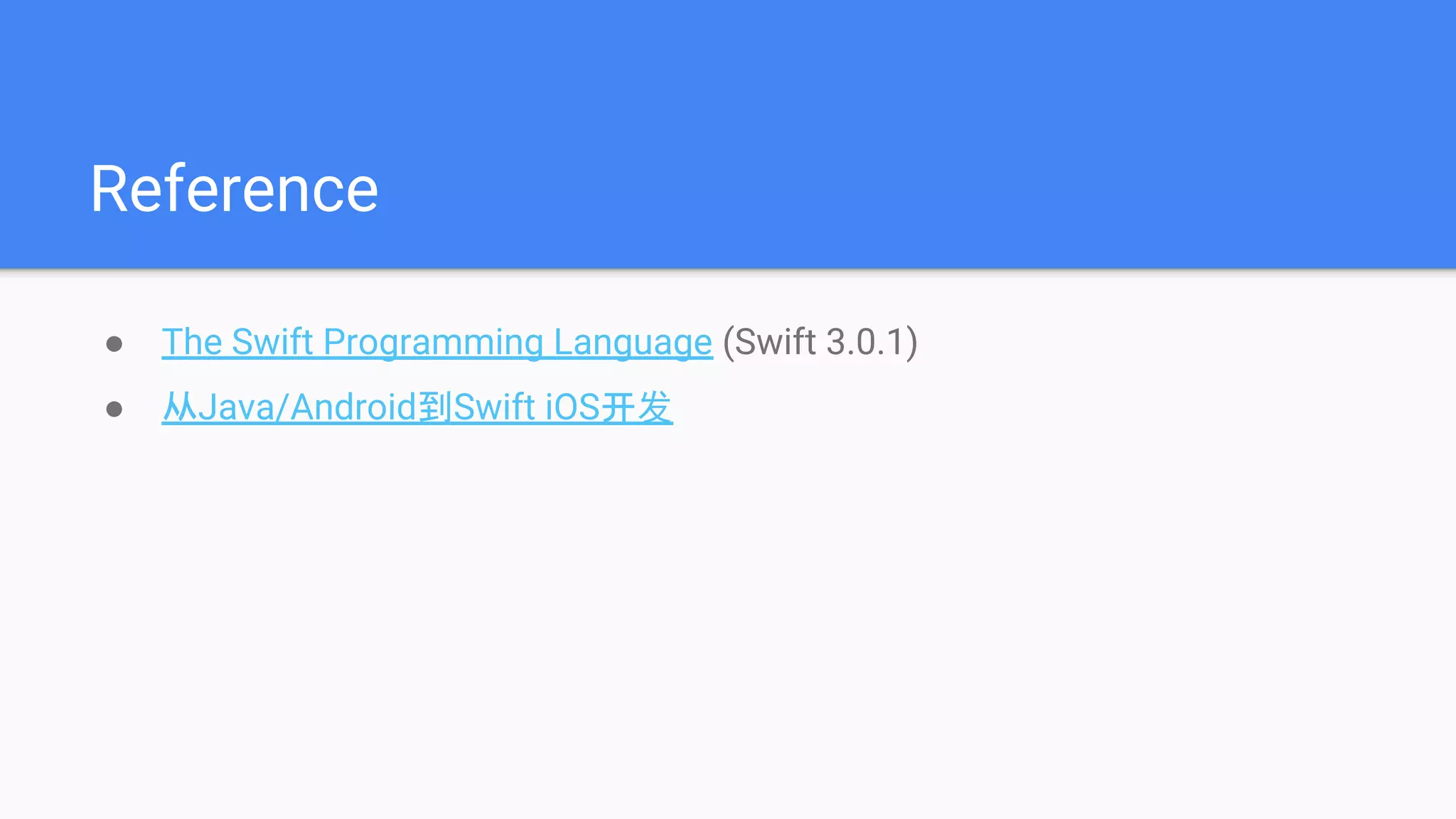1. Swift includes features like subscripts, optional chaining, and error handling that improve safety and flexibility compared to earlier languages.
2. The document discusses Swift concepts like extensions, protocols, and generics that allow code reuse and abstraction. Protocols define requirements that types can conform to through extensions.
3. Generics allow algorithms to work with different types through type parameters like Stack<Element>, avoiding duplicate non-generic code. This makes code cleaner, safer, and more reusable.
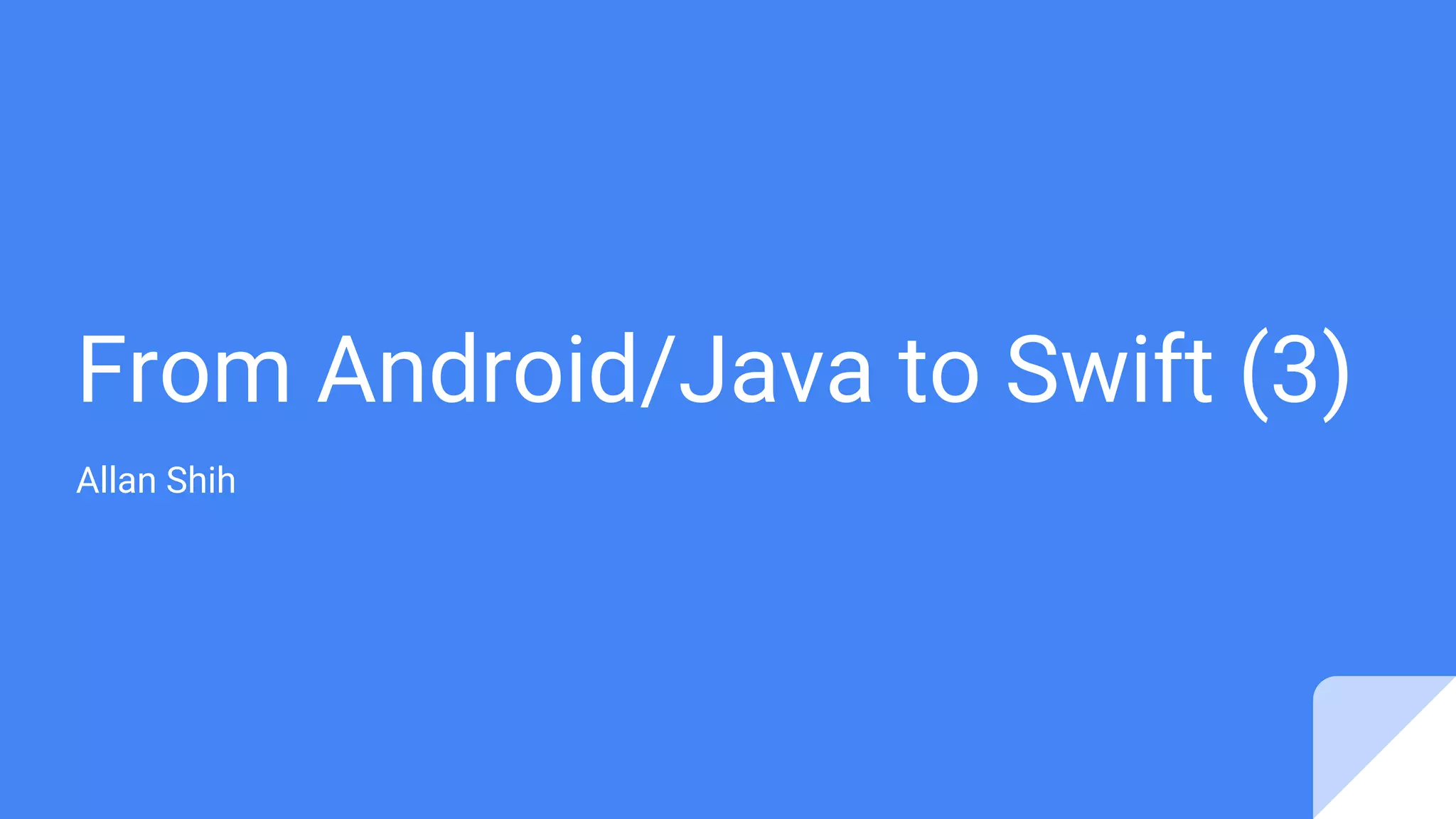

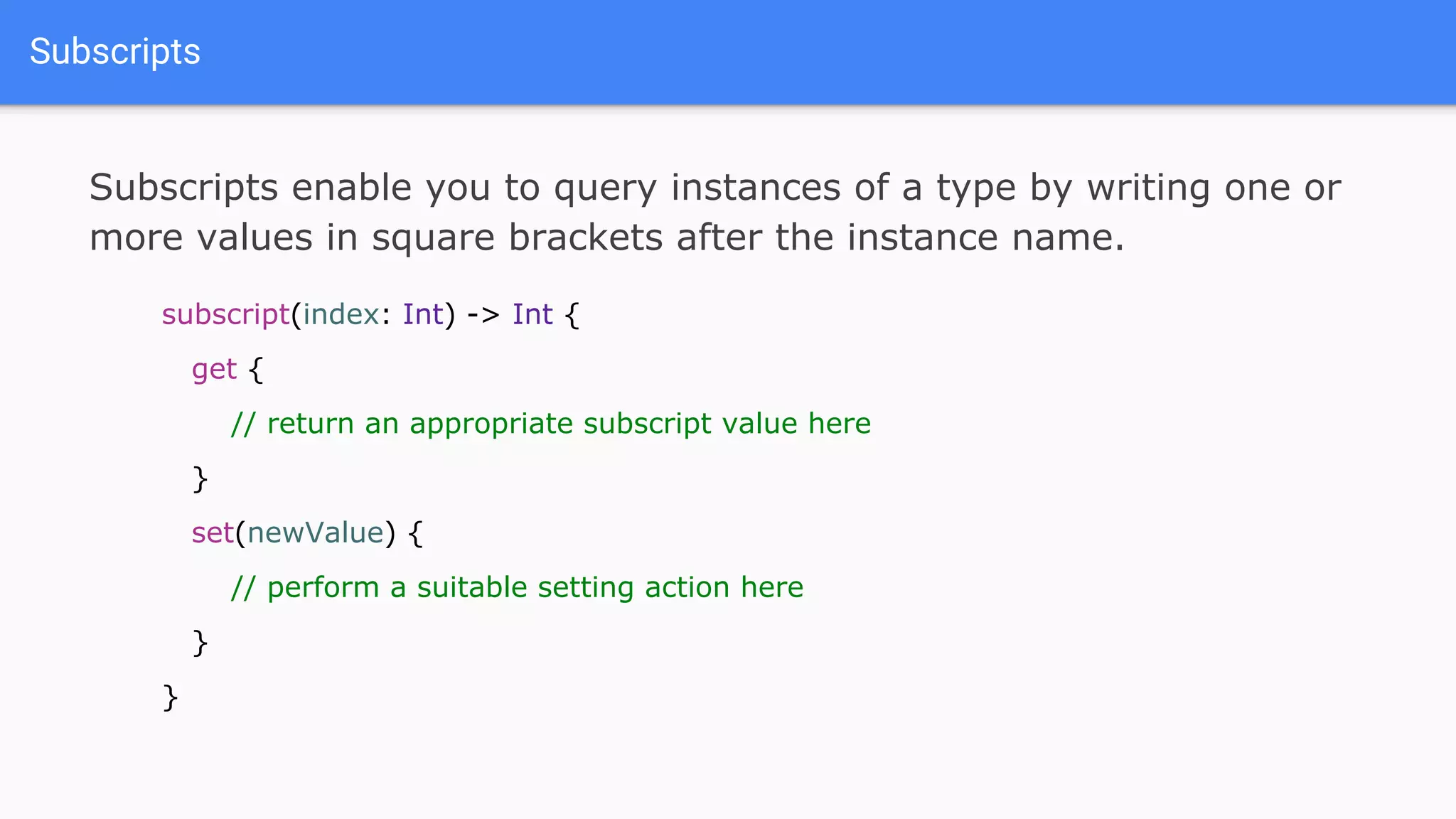
![Example of a read-only subscript
struct TimesTable {
let multiplier: Int
subscript(index: Int) -> Int {
return multiplier * index
}
}
let threeTimesTable = TimesTable(multiplier: 3)
print("six times three is (threeTimesTable[6])")
// Prints "six times three is 18"](https://image.slidesharecdn.com/fromandroid2fjavatoswift3-180706025444/75/From-android-java-to-swift-3-4-2048.jpg)
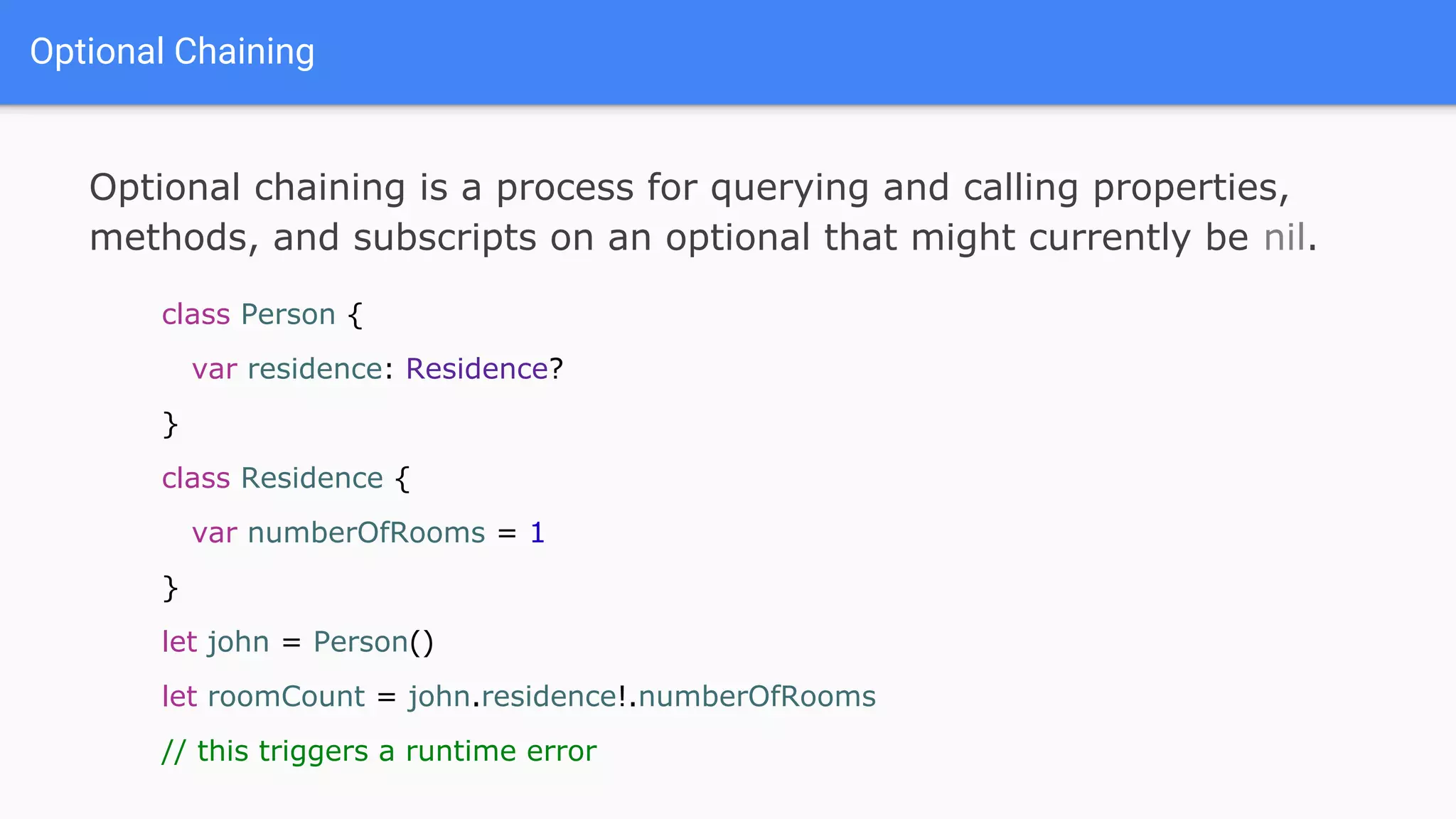
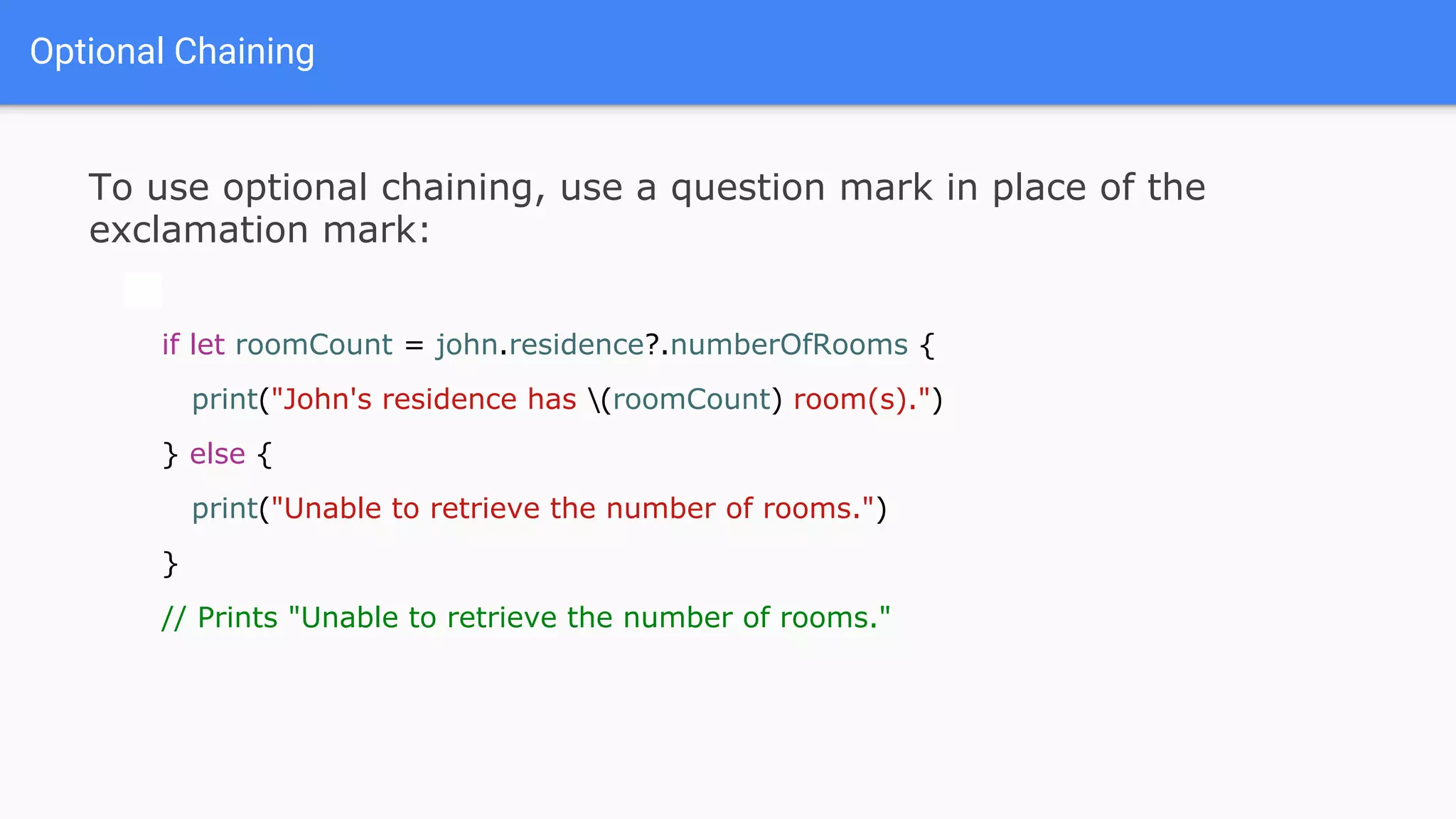
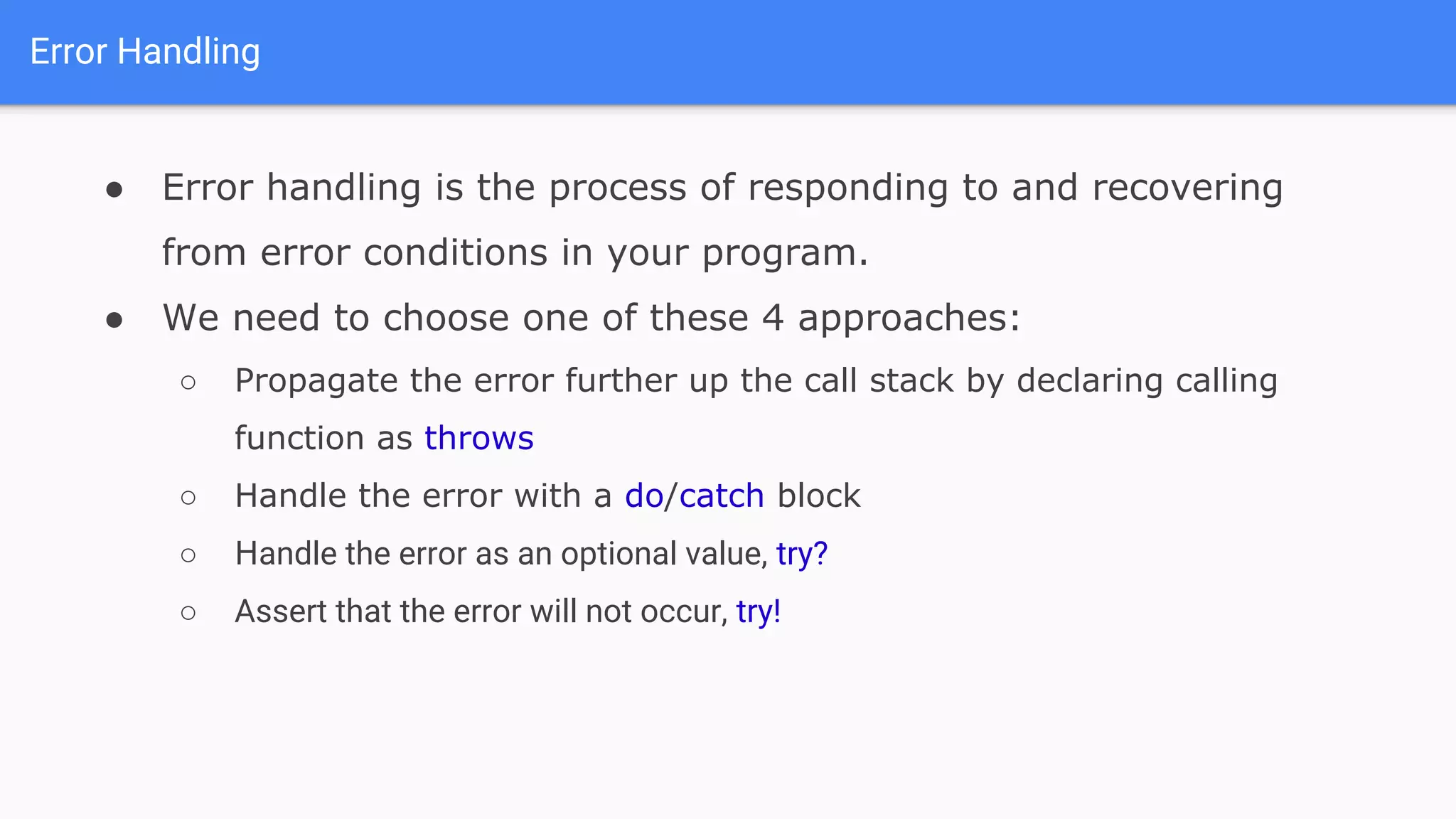
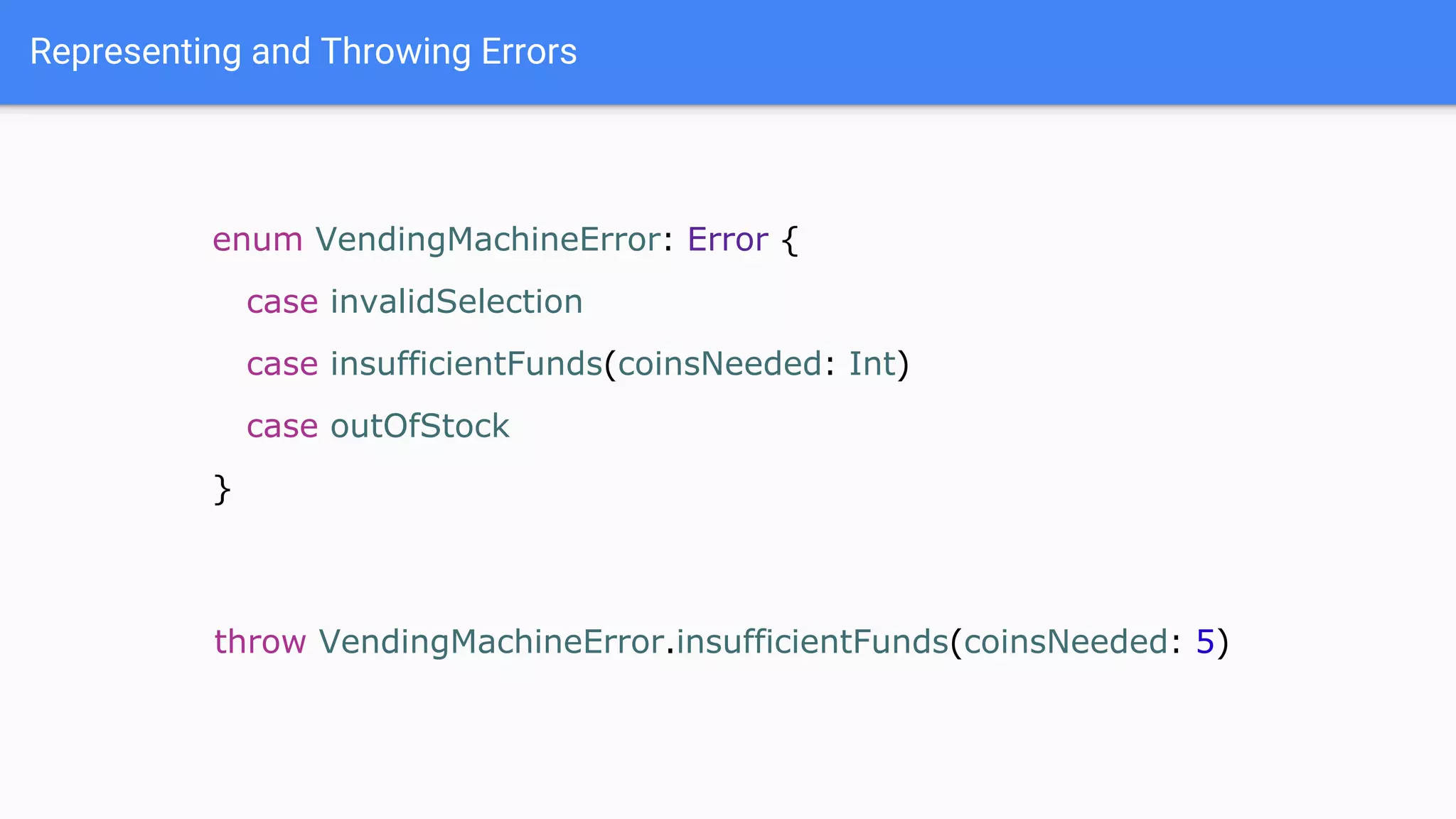
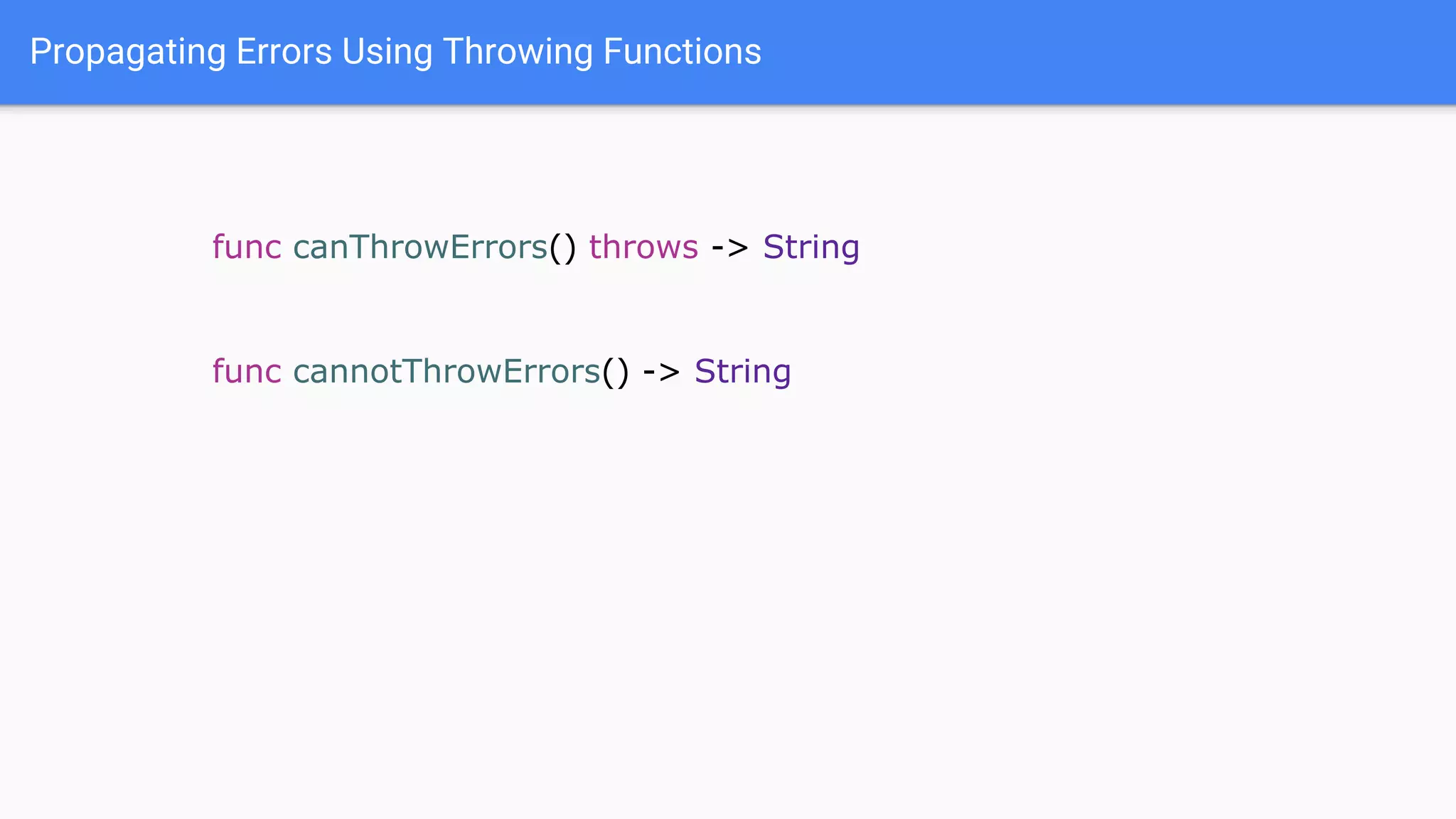
![Propagating Errors Using Throwing Functions
func vend(itemNamed name: String) throws {
guard let item = inventory[name] else {
throw VendingMachineError.invalidSelection
}
guard item.count > 0 else {
throw VendingMachineError.outOfStock
}
guard item.price <= coinsDeposited else {
throw VendingMachineError.insufficientFunds(coinsNeeded: item.price -
coinsDeposited)
}
coinsDeposited -= item.price](https://image.slidesharecdn.com/fromandroid2fjavatoswift3-180706025444/75/From-android-java-to-swift-3-10-2048.jpg)
![Continue to propagate Errors
let favoriteSnacks = [
"Alice": "Chips",
"Bob": "Licorice",
"Eve": "Pretzels",
]
func buyFavoriteSnack(person: String, vendingMachine: VendingMachine) throws {
let snackName = favoriteSnacks[person] ?? "Candy Bar"
try vendingMachine.vend(itemNamed: snackName)
}](https://image.slidesharecdn.com/fromandroid2fjavatoswift3-180706025444/75/From-android-java-to-swift-3-11-2048.jpg)
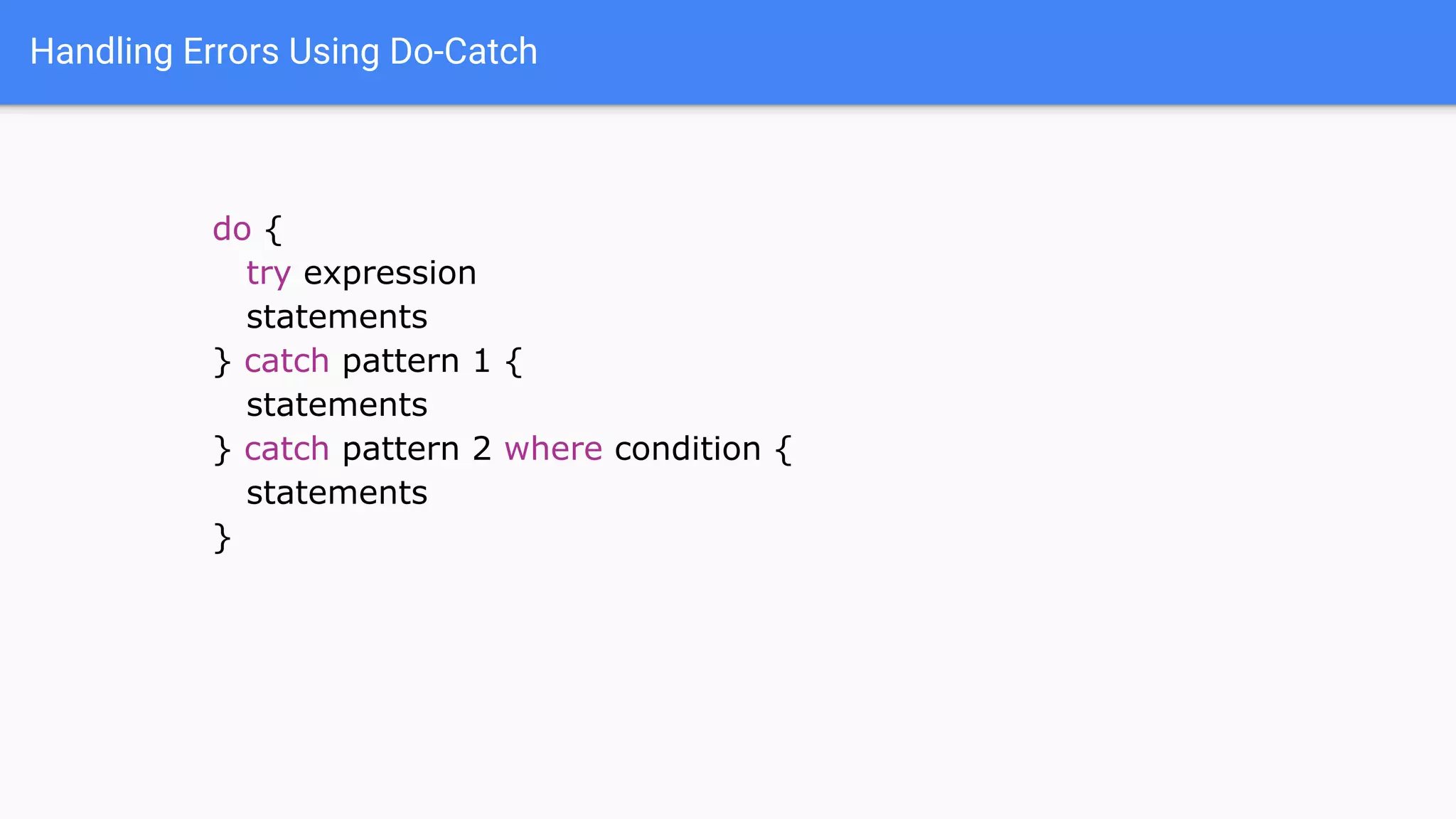
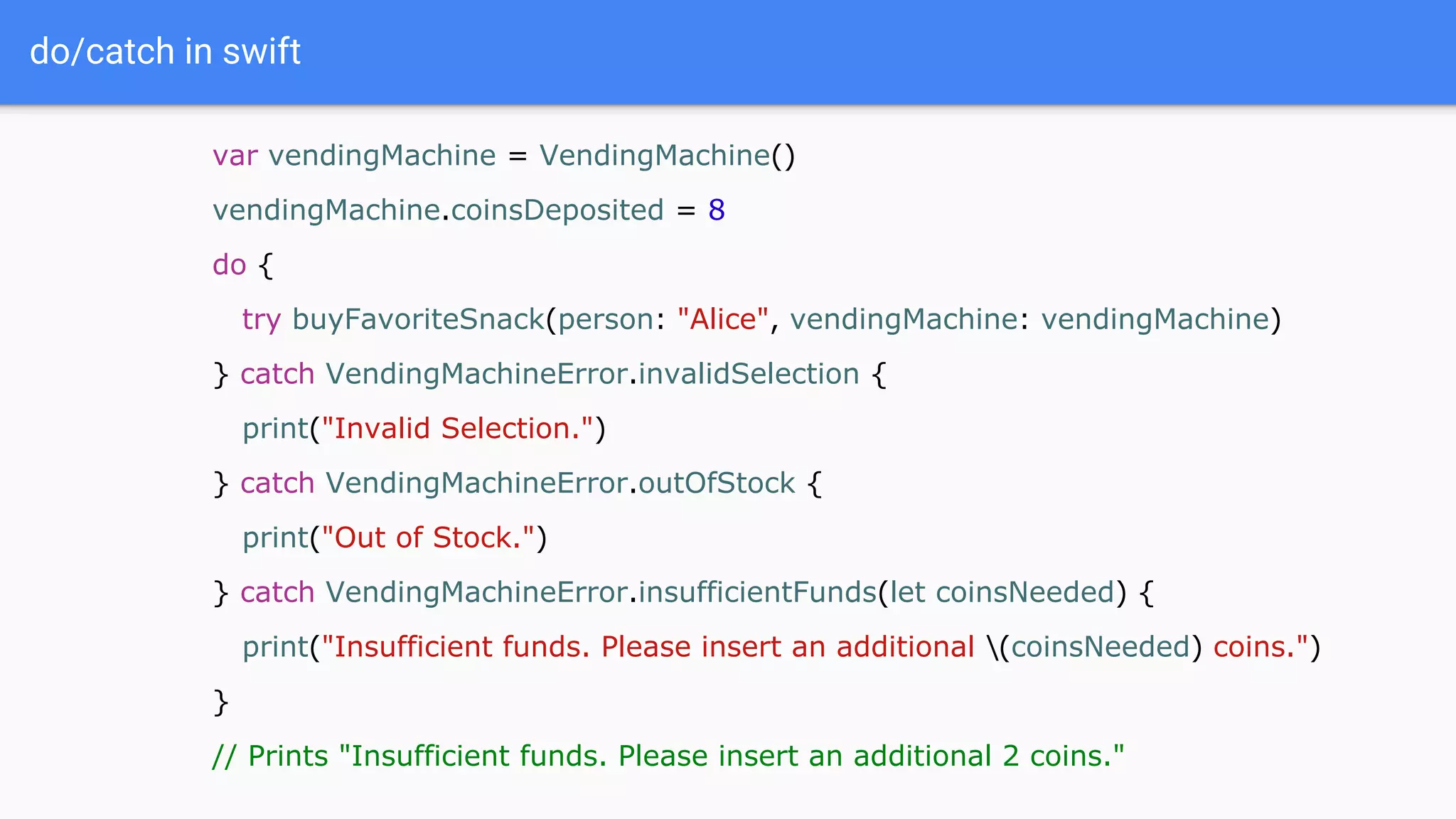
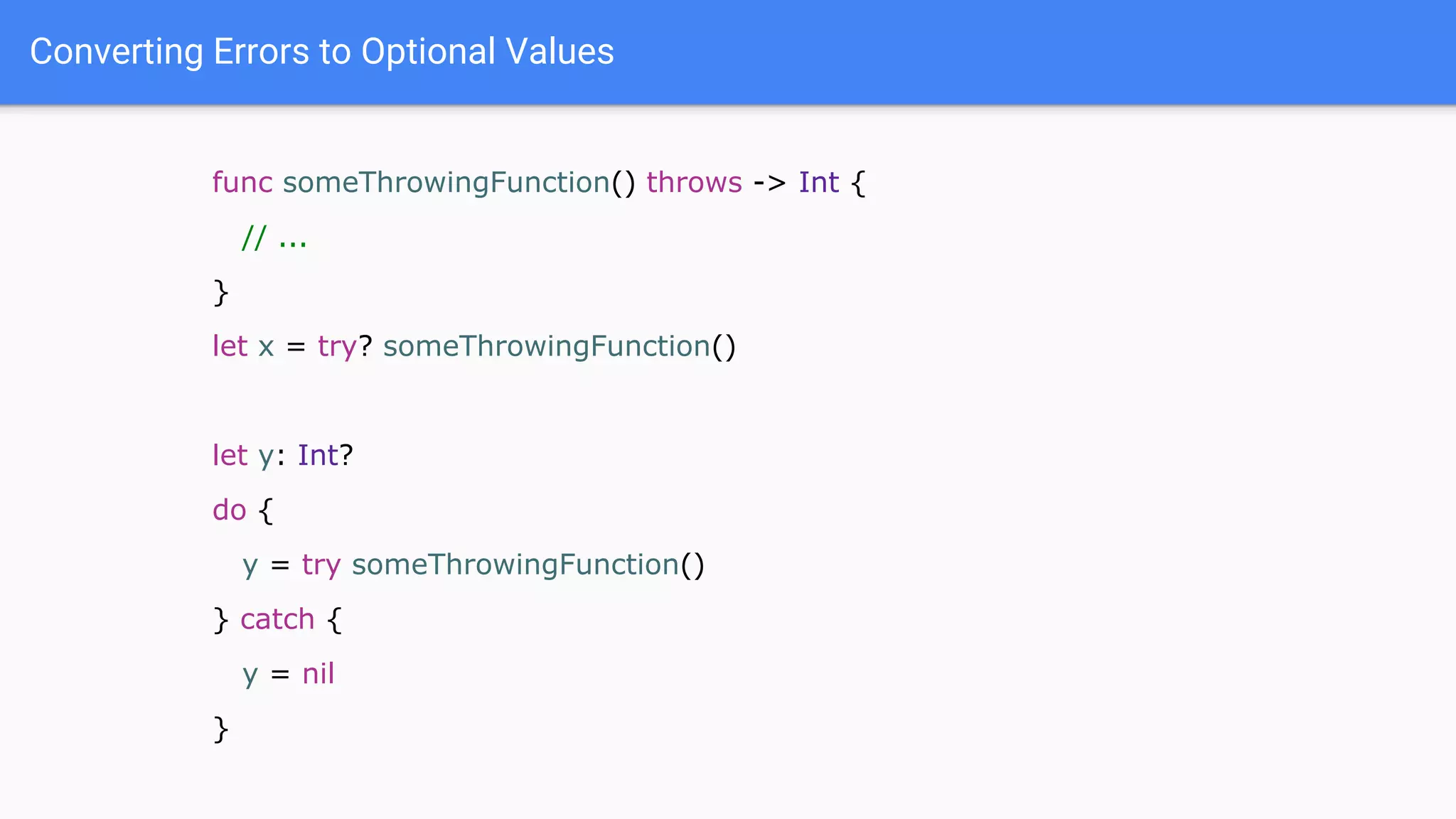
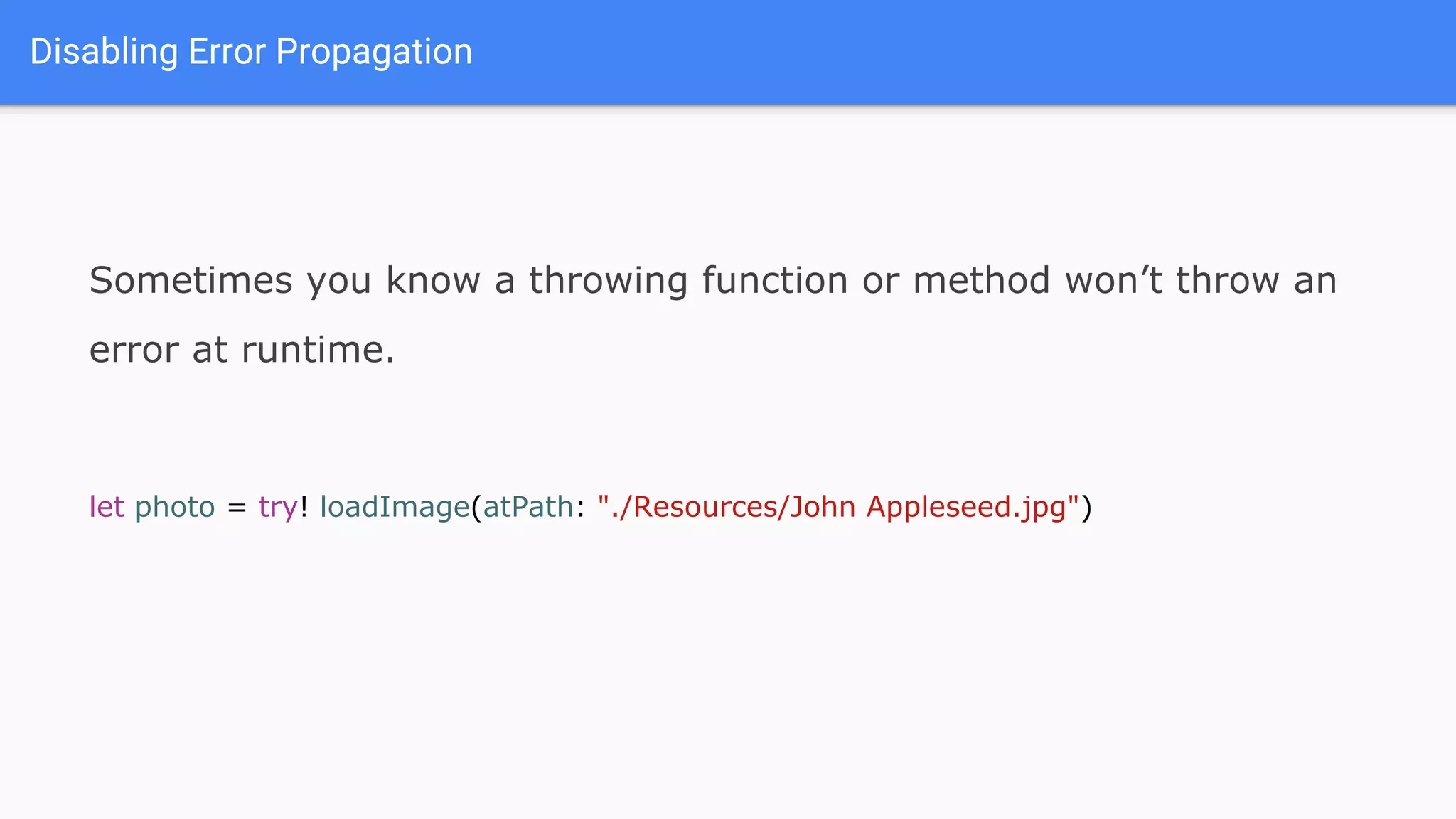
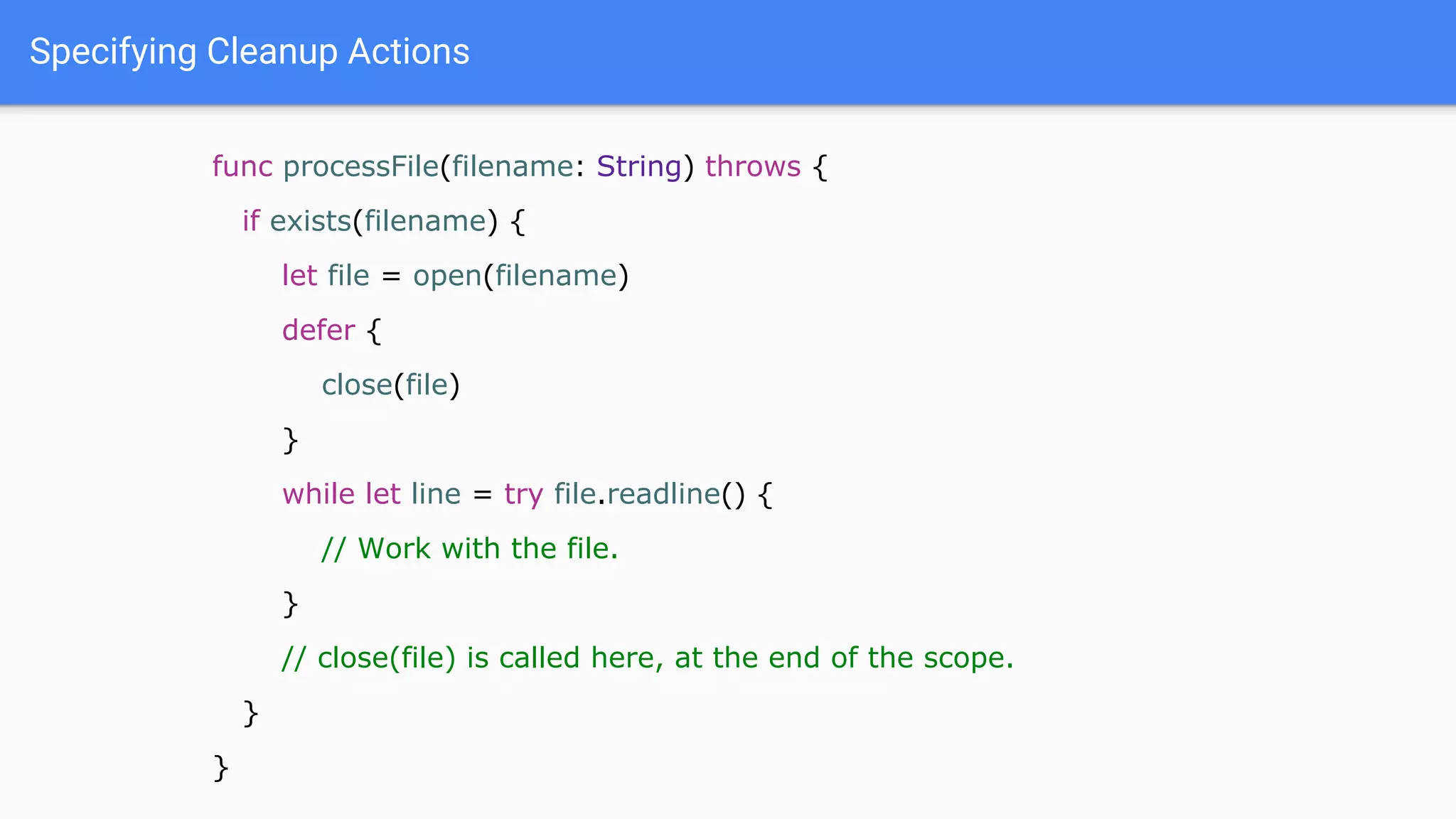
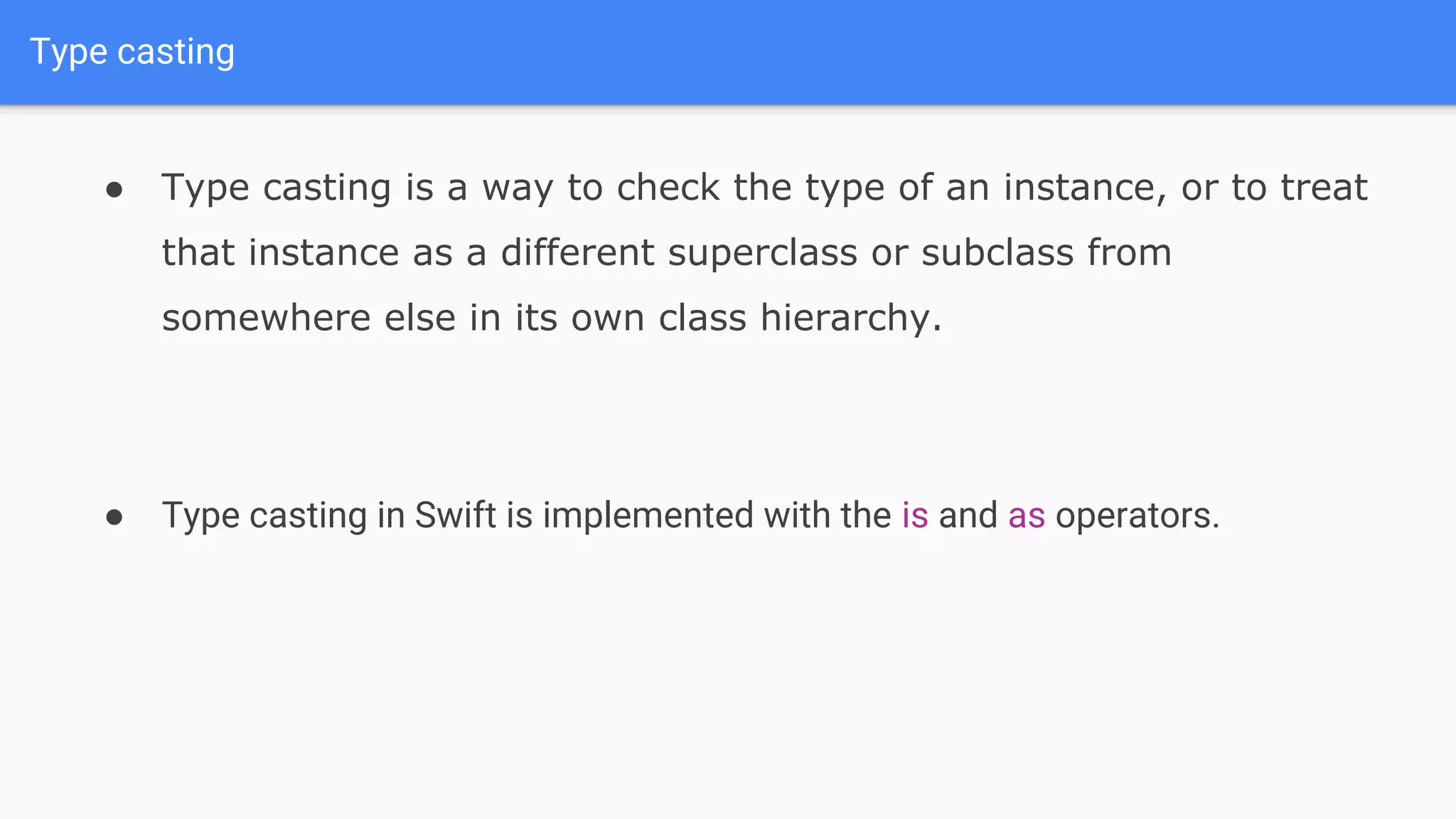
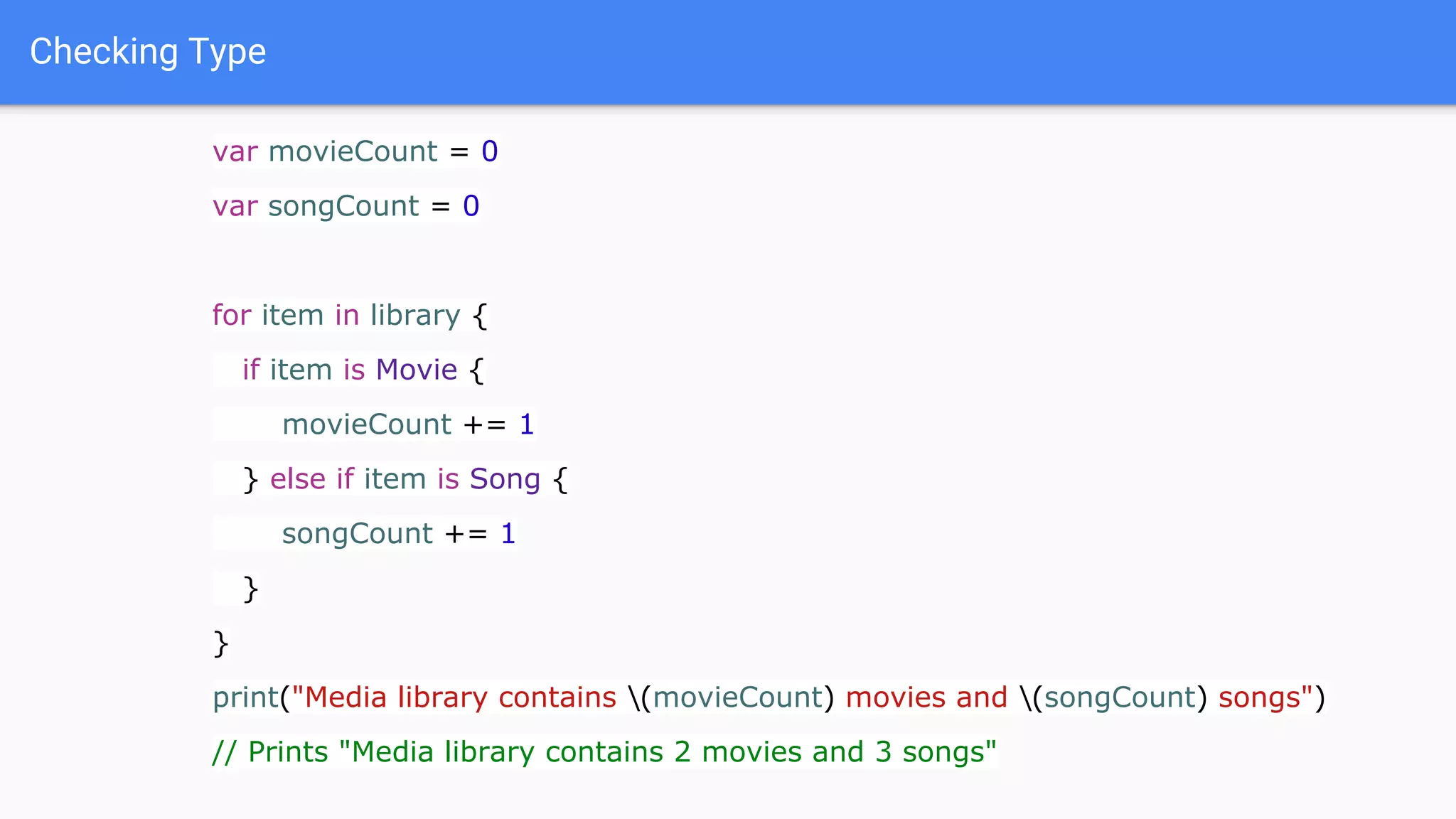
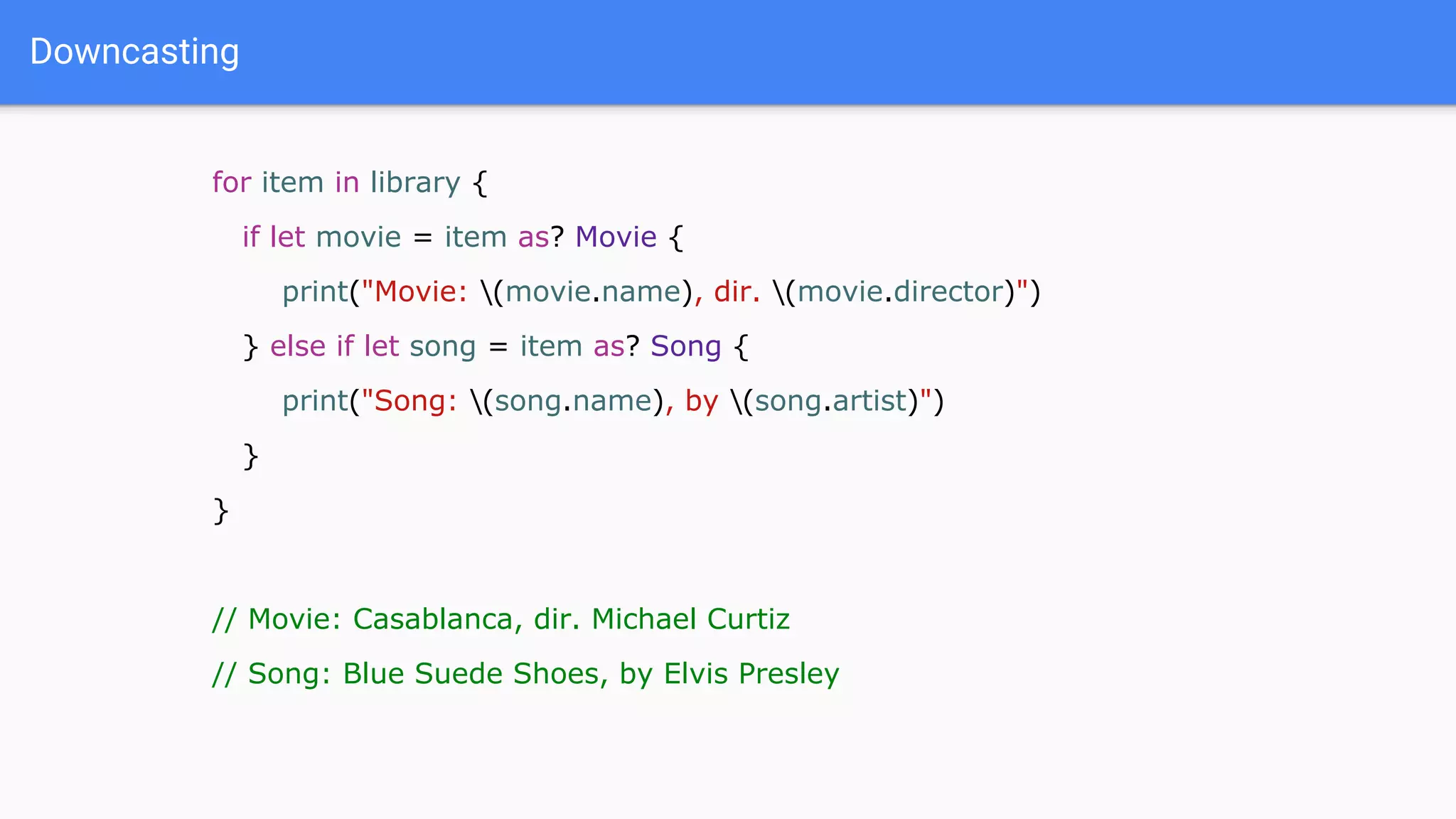
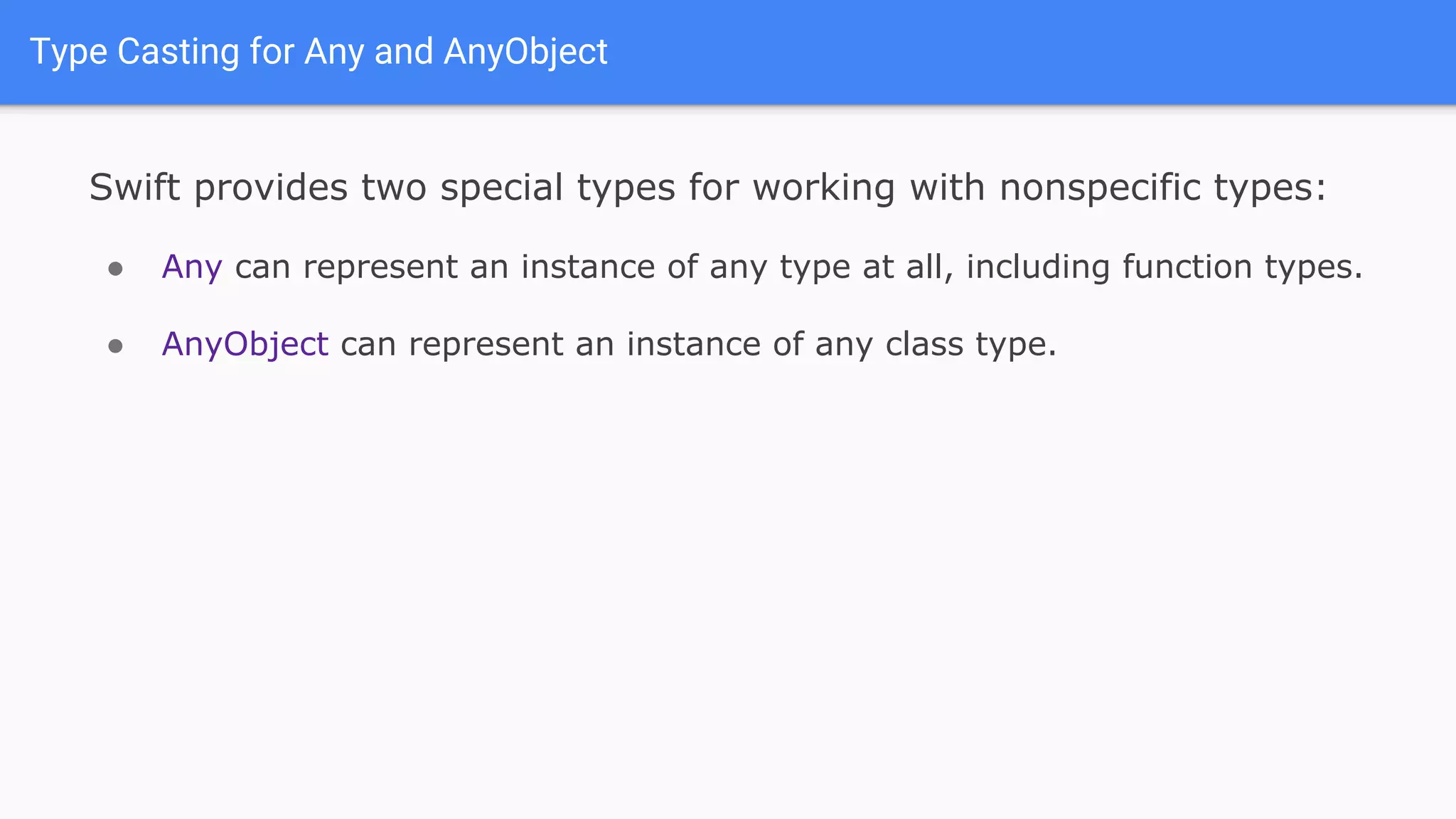
![Any example
var things = [Any]()
things.append(0)
things.append(0.0)
things.append(42)
things.append(3.14159)
things.append("hello")
things.append((3.0, 5.0))
things.append(Movie(name: "Ghostbusters", director: "Ivan Reitman"))
things.append({ (name: String) -> String in "Hello, (name)" })](https://image.slidesharecdn.com/fromandroid2fjavatoswift3-180706025444/75/From-android-java-to-swift-3-21-2048.jpg)
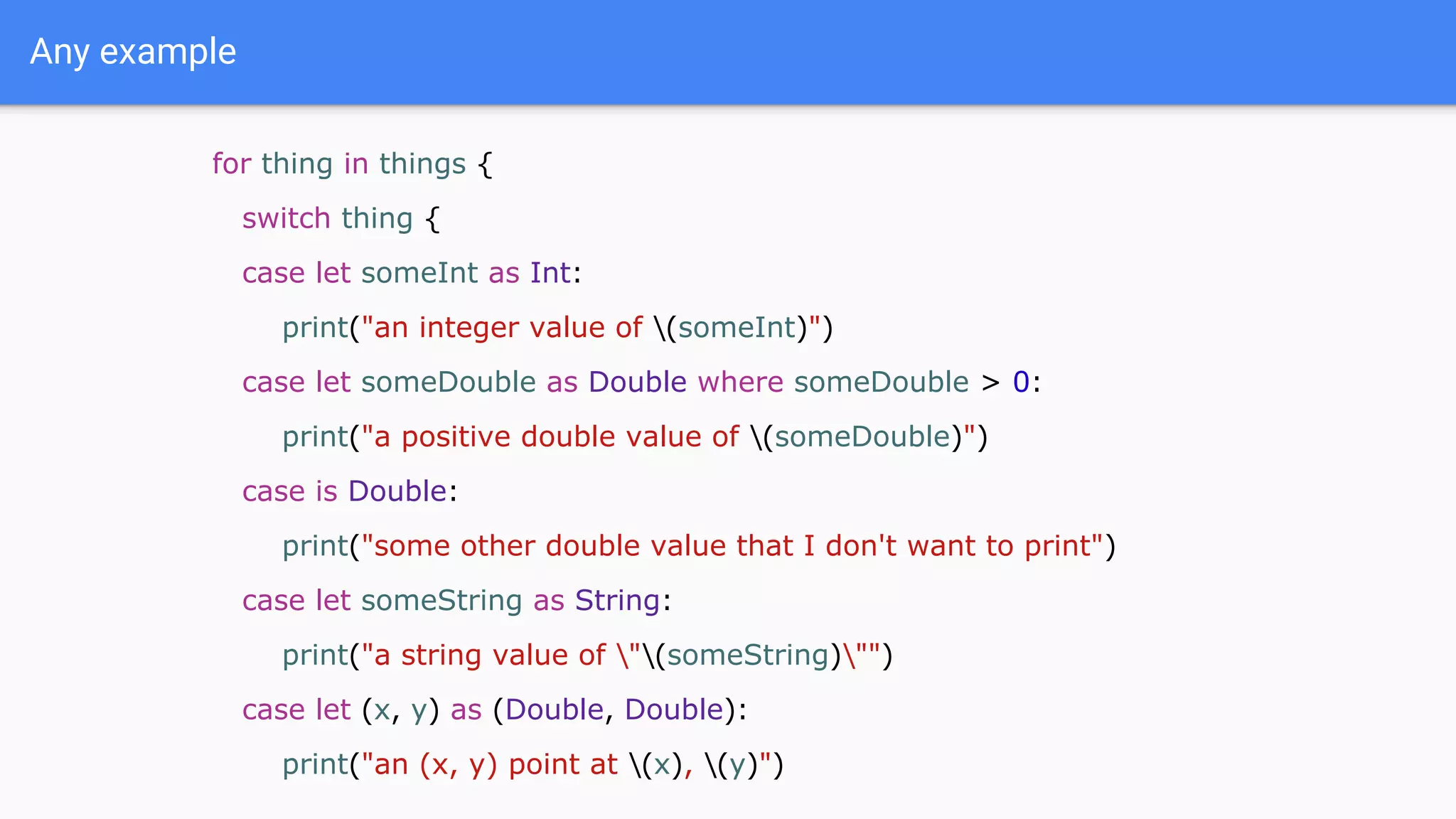
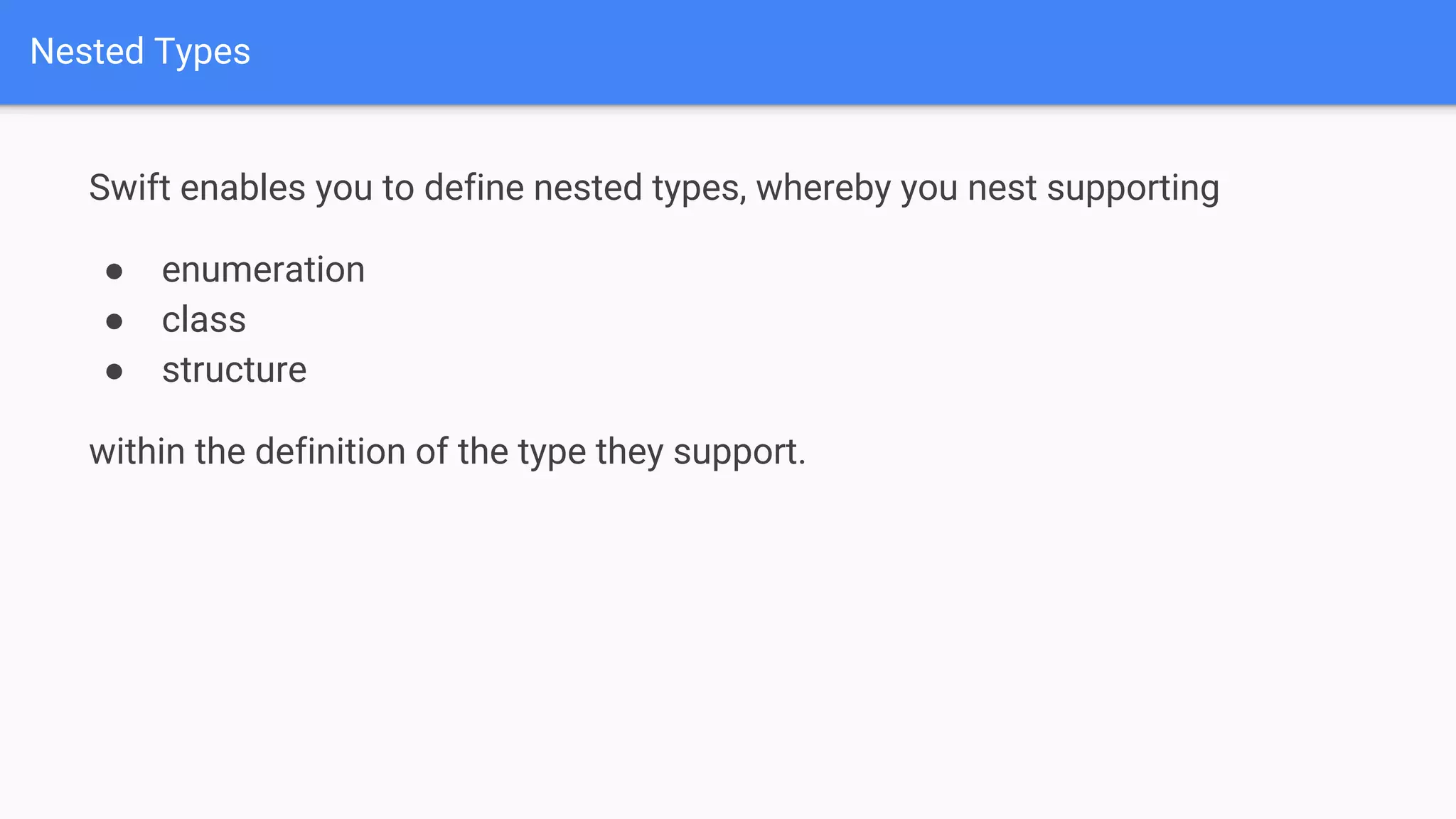
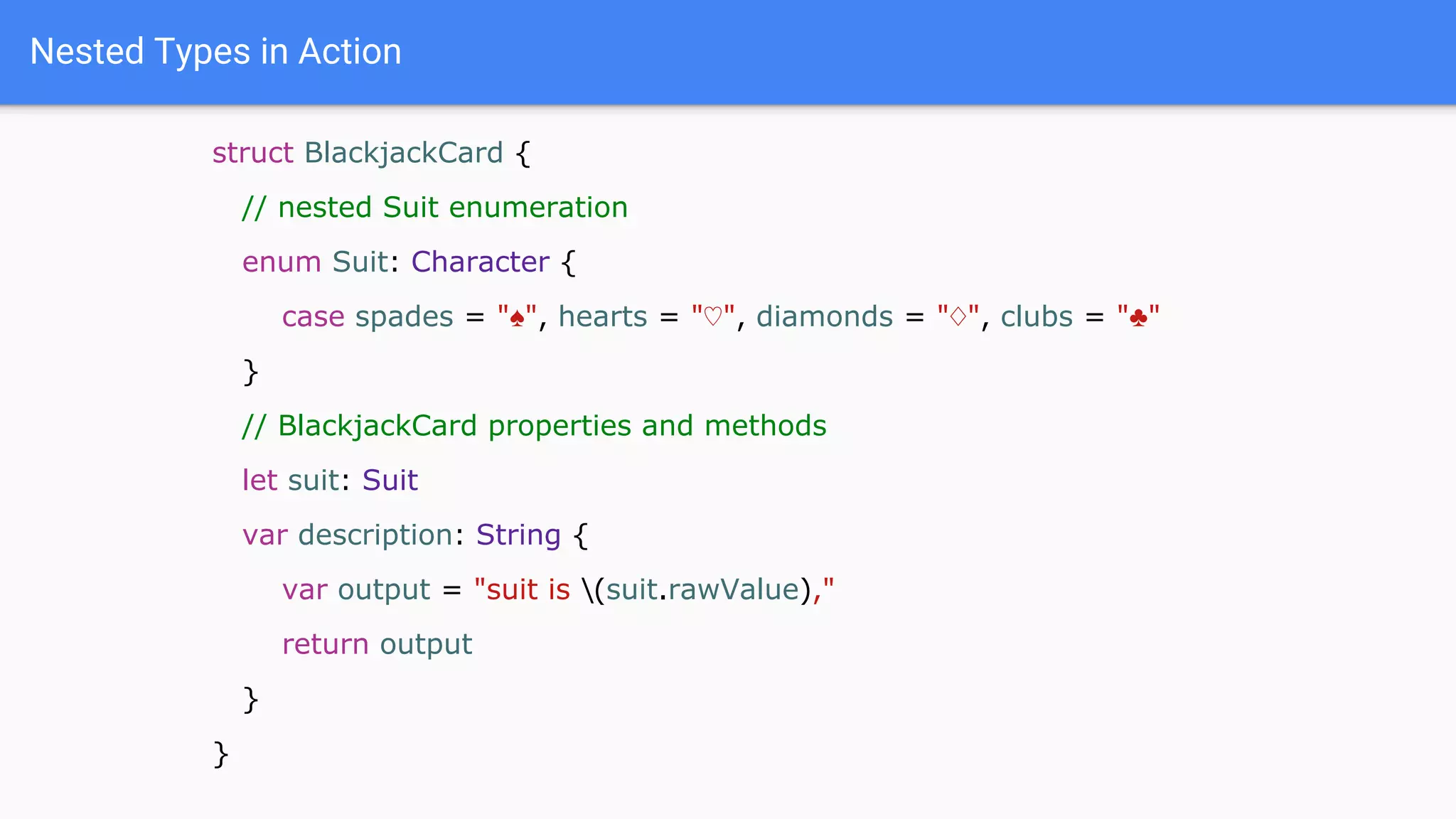
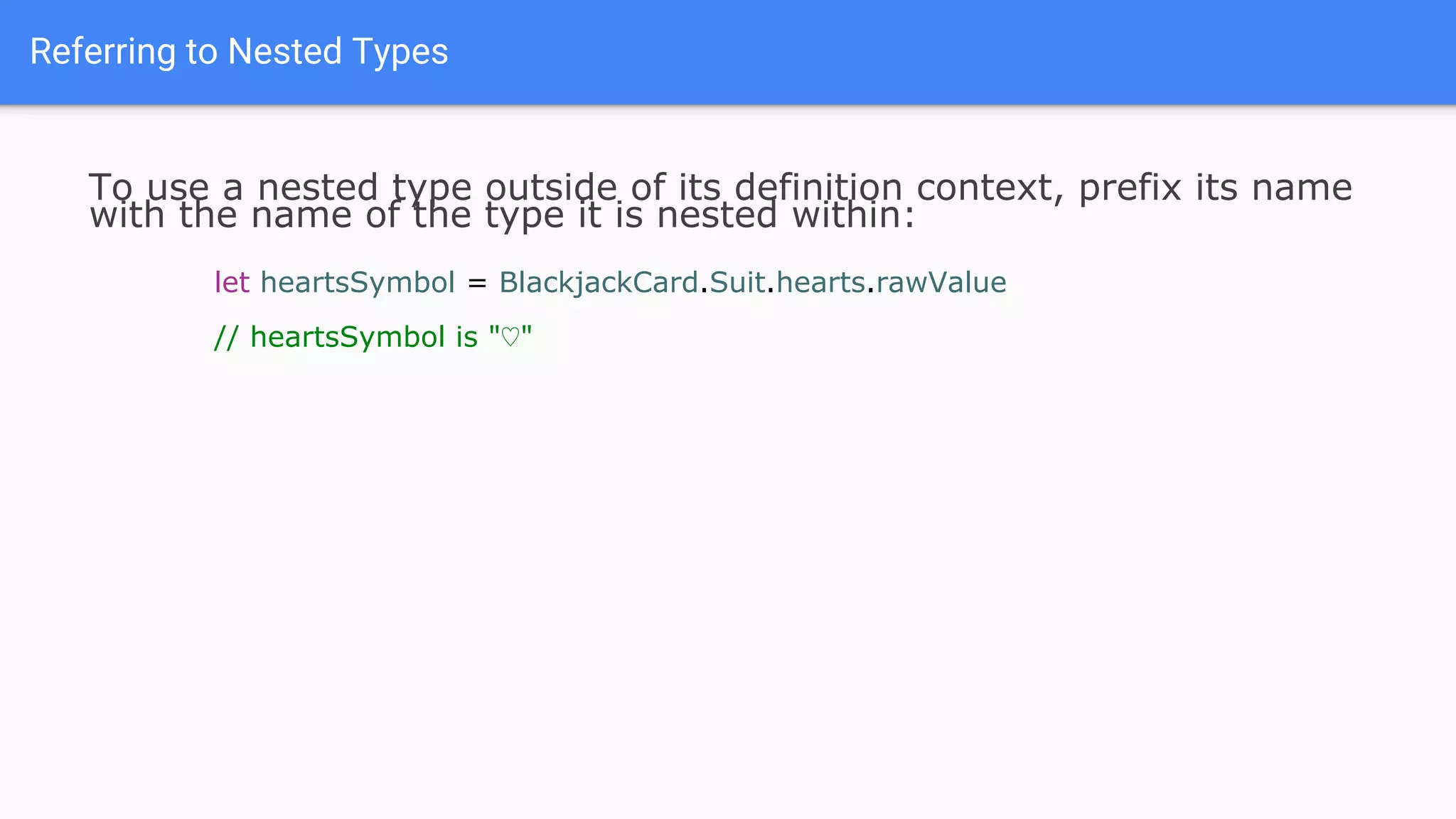
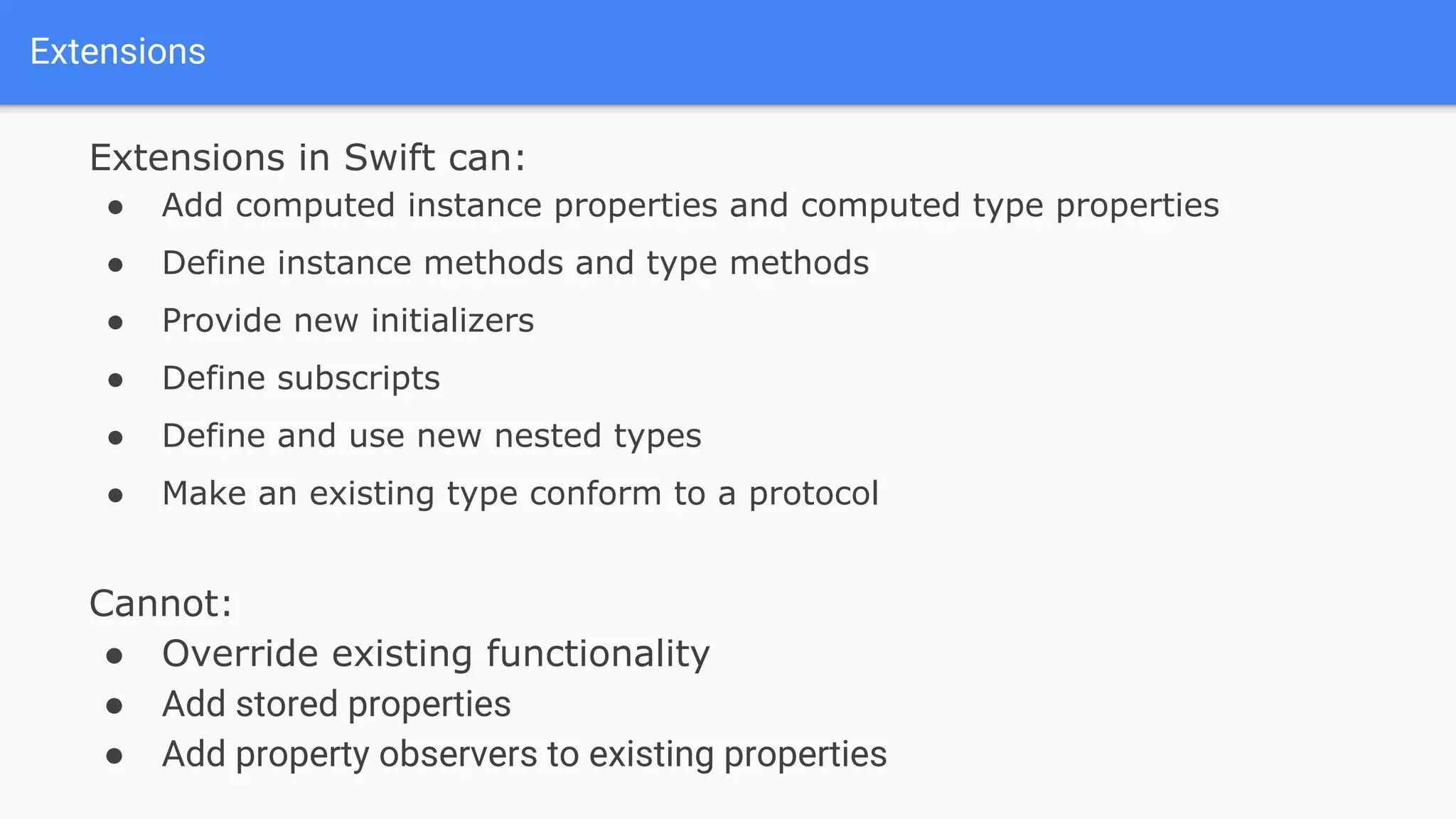
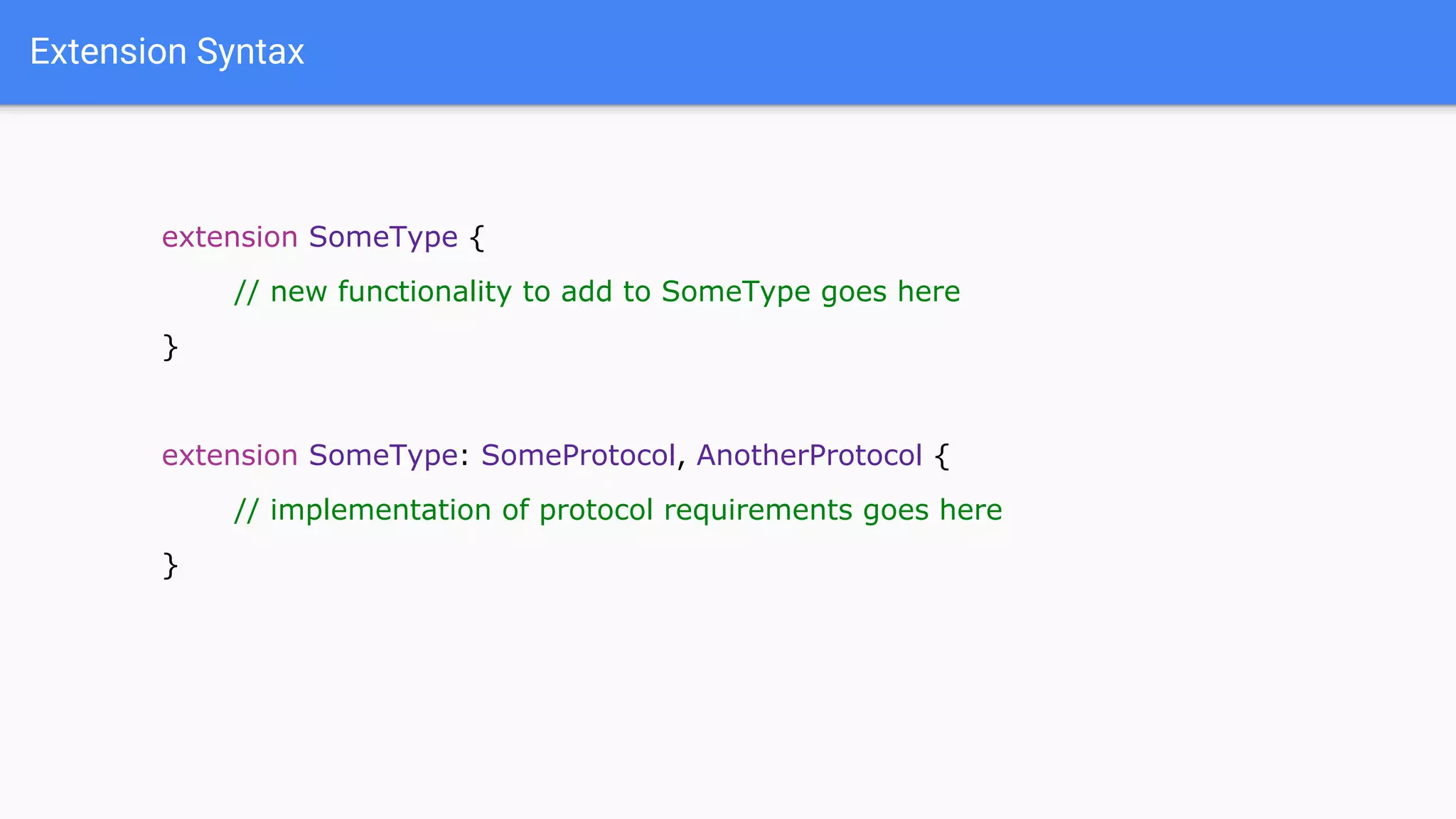
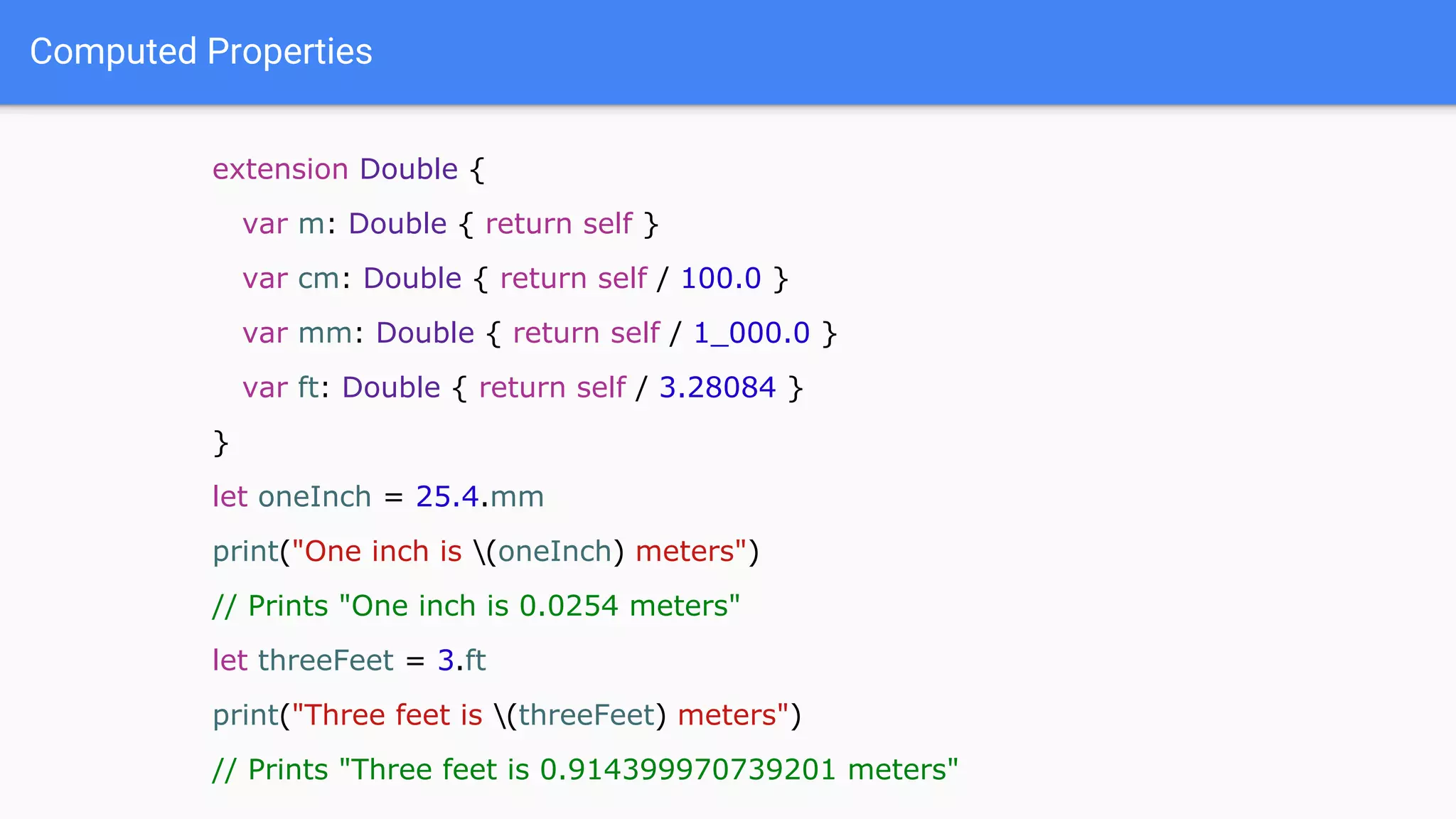
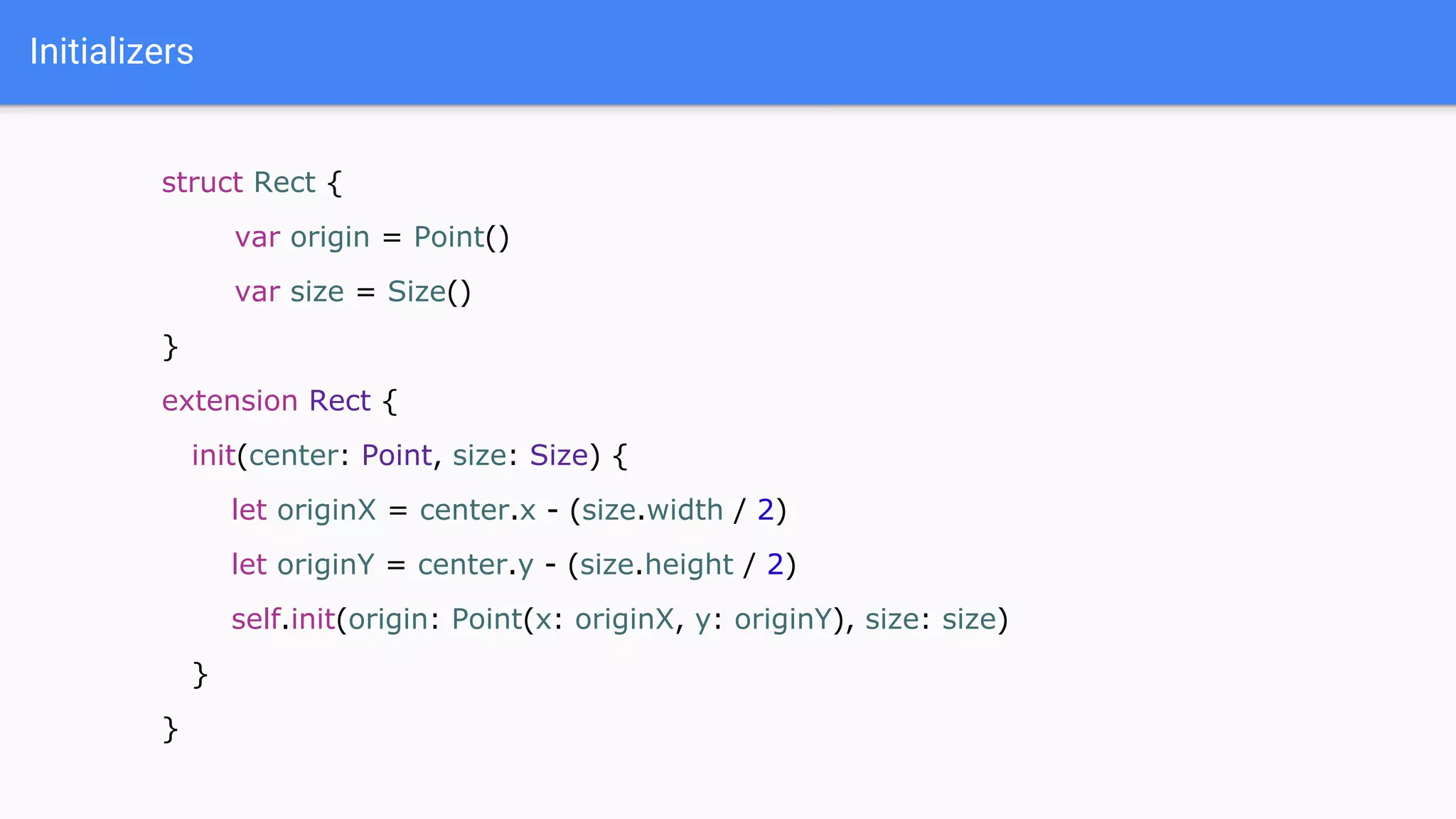
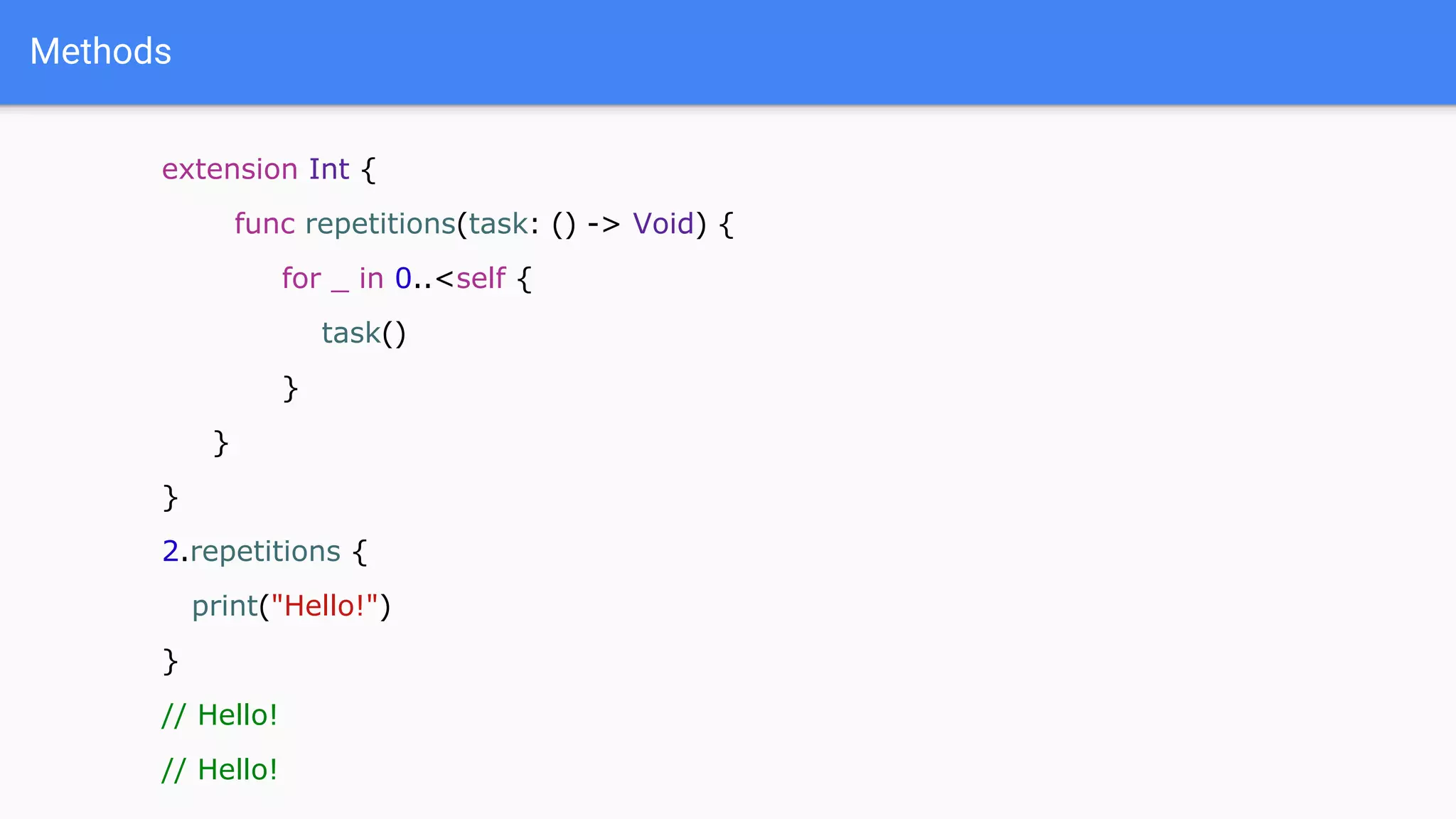
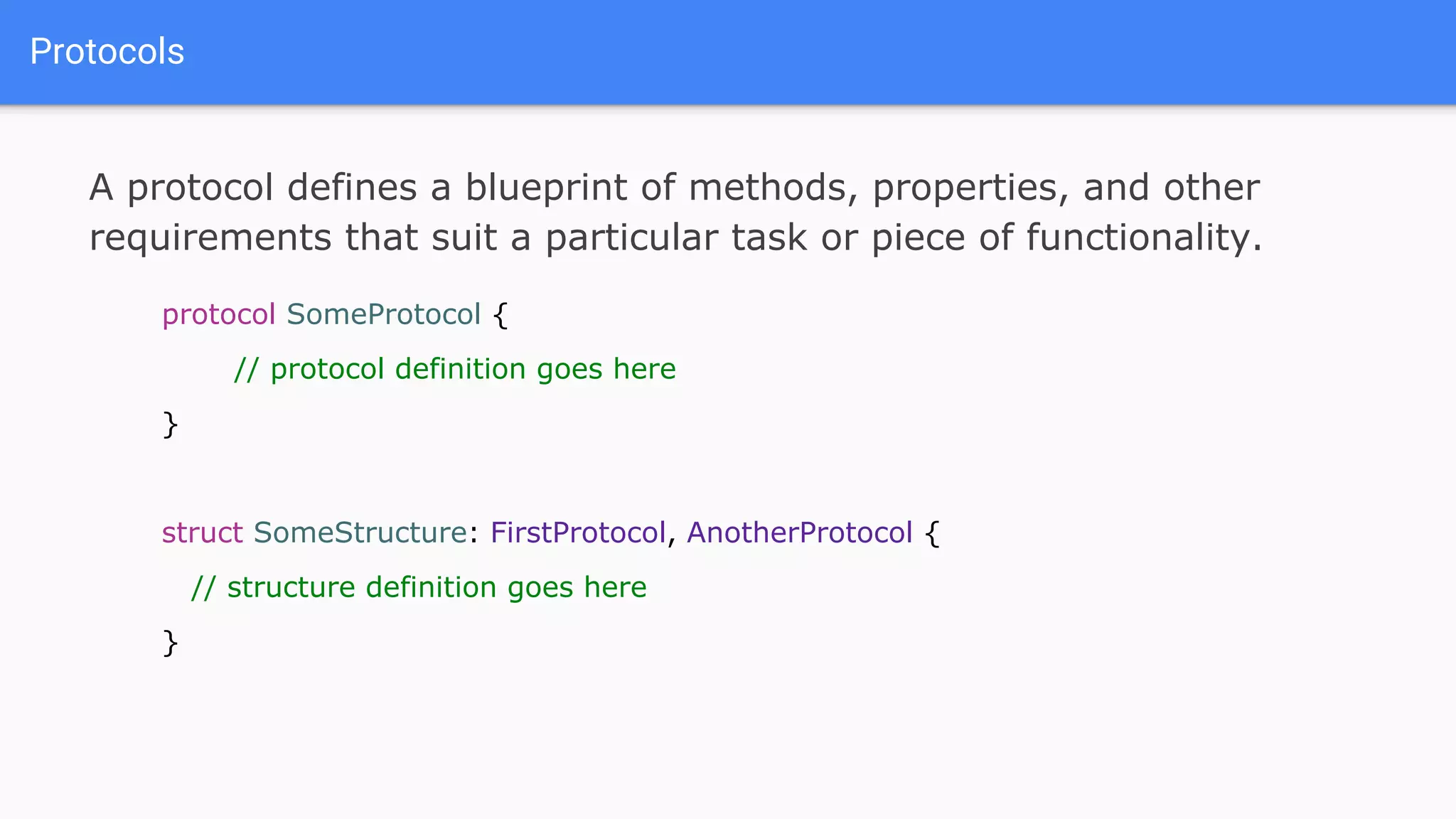
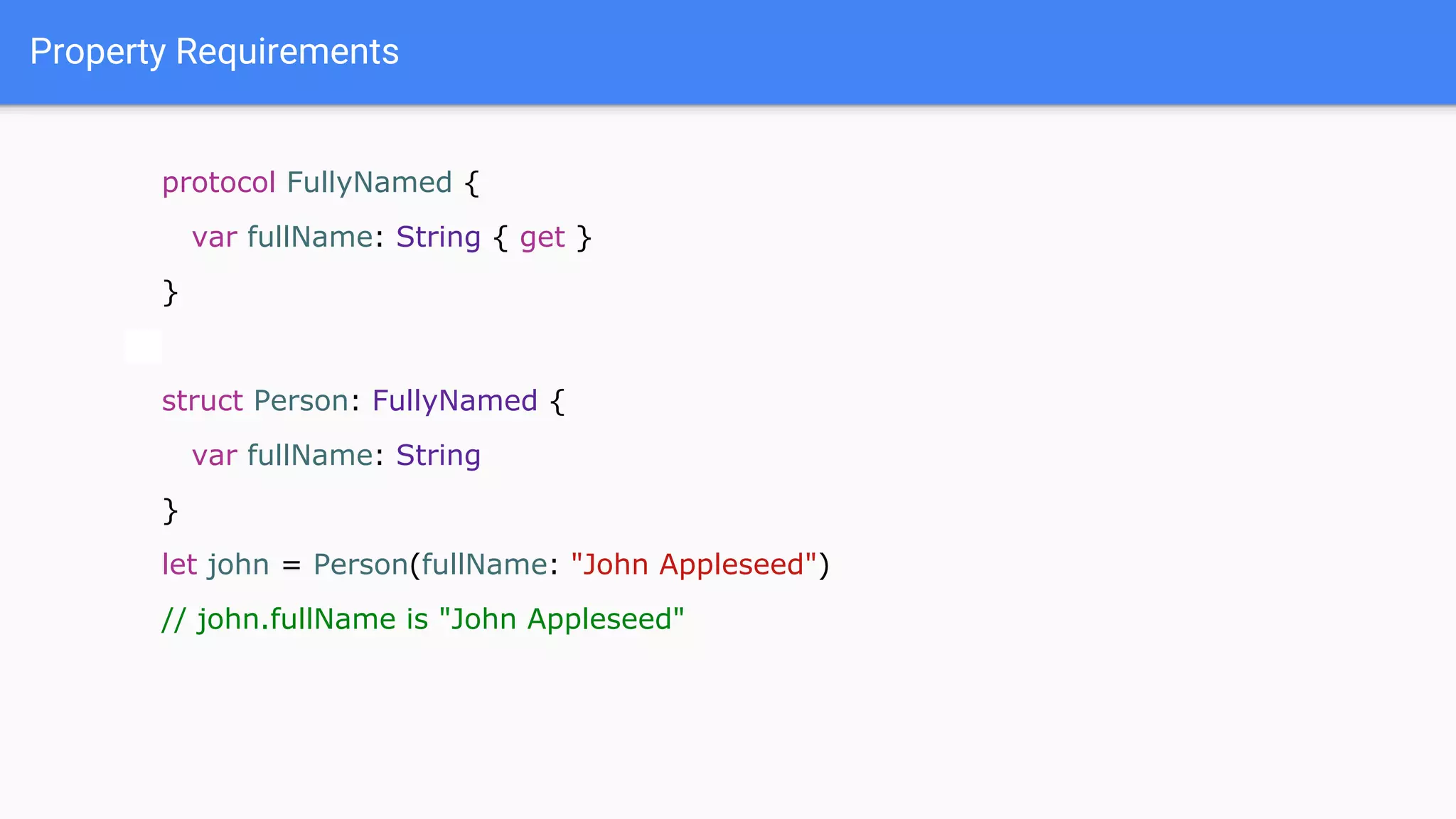
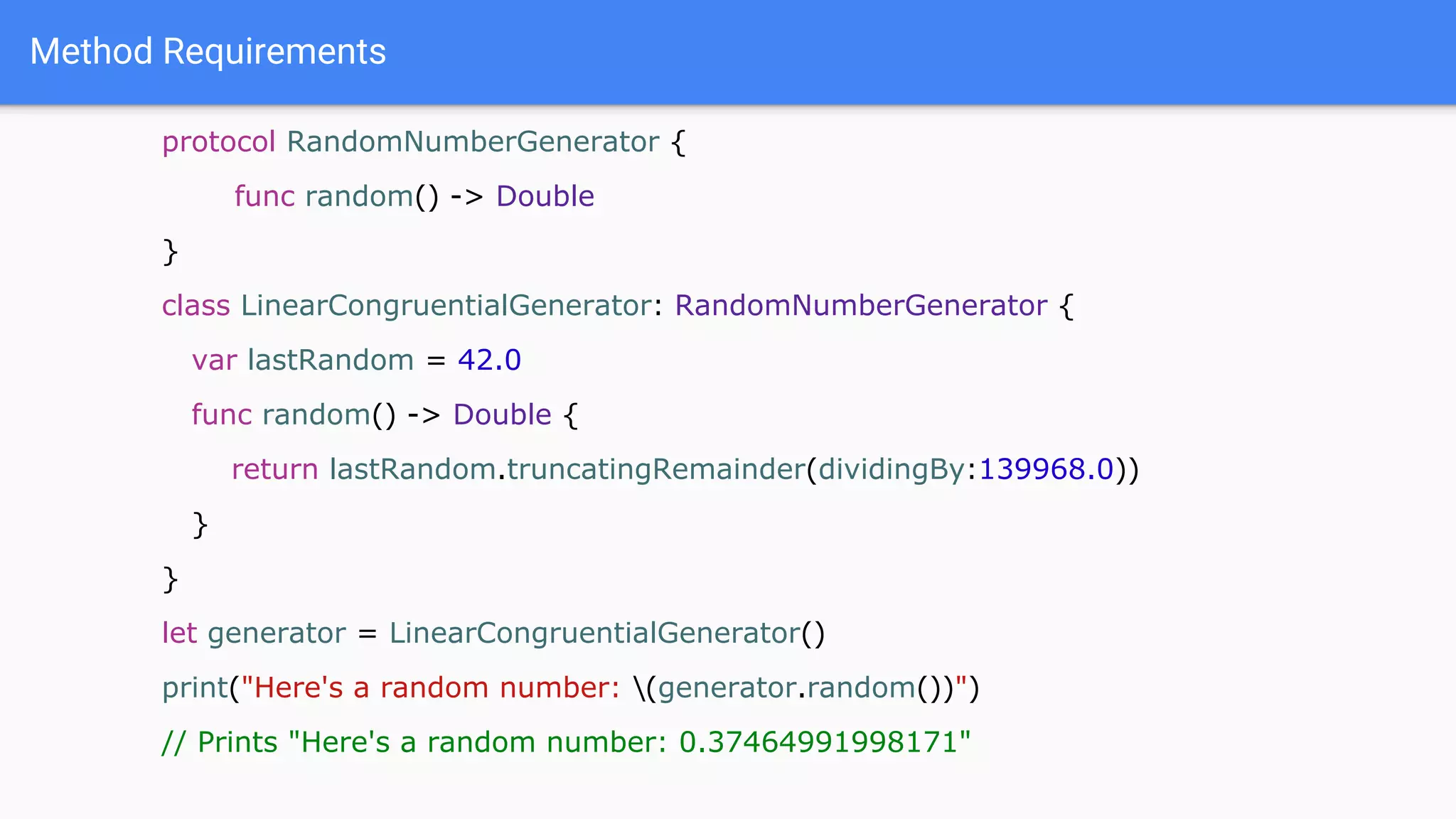
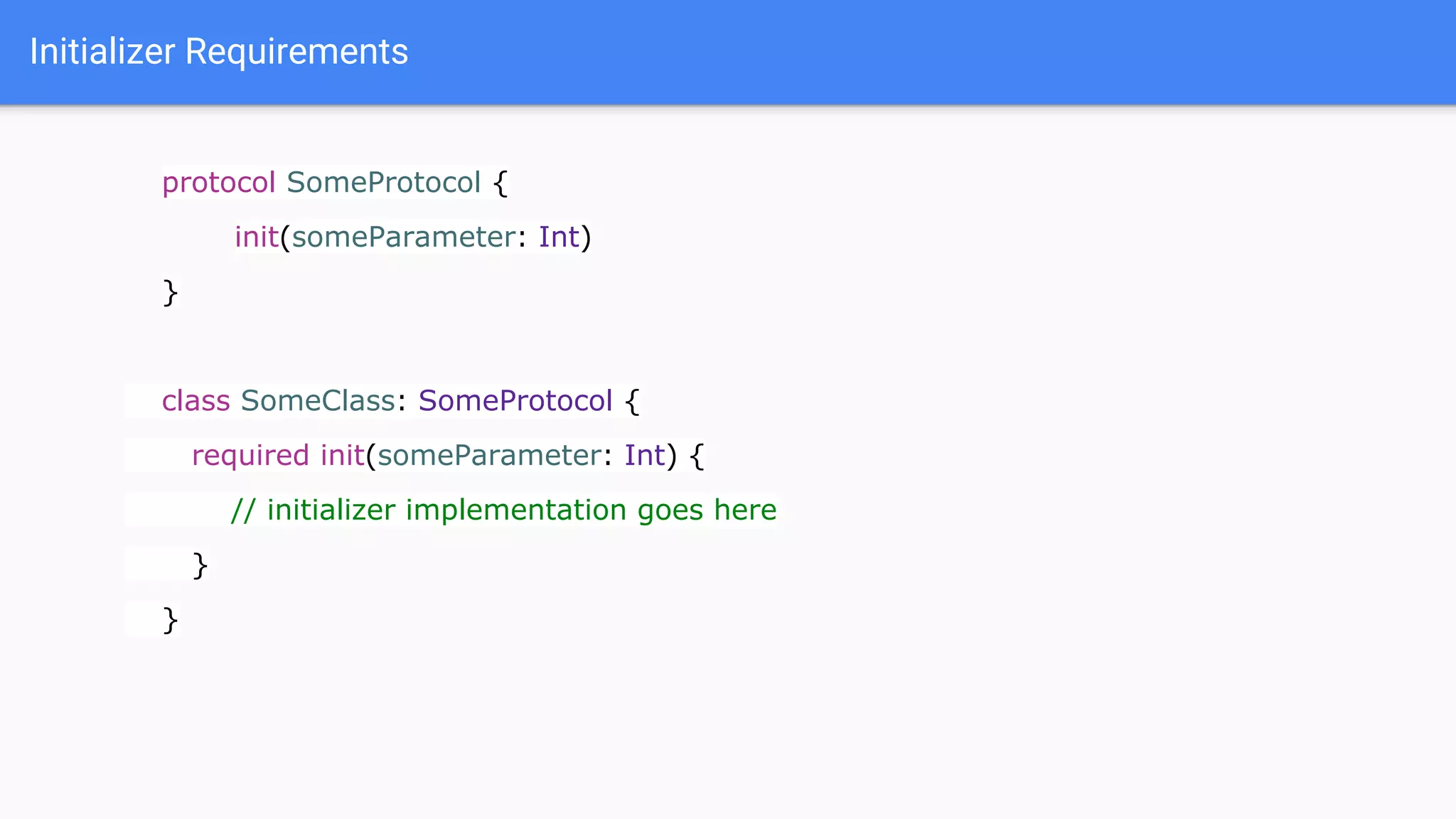
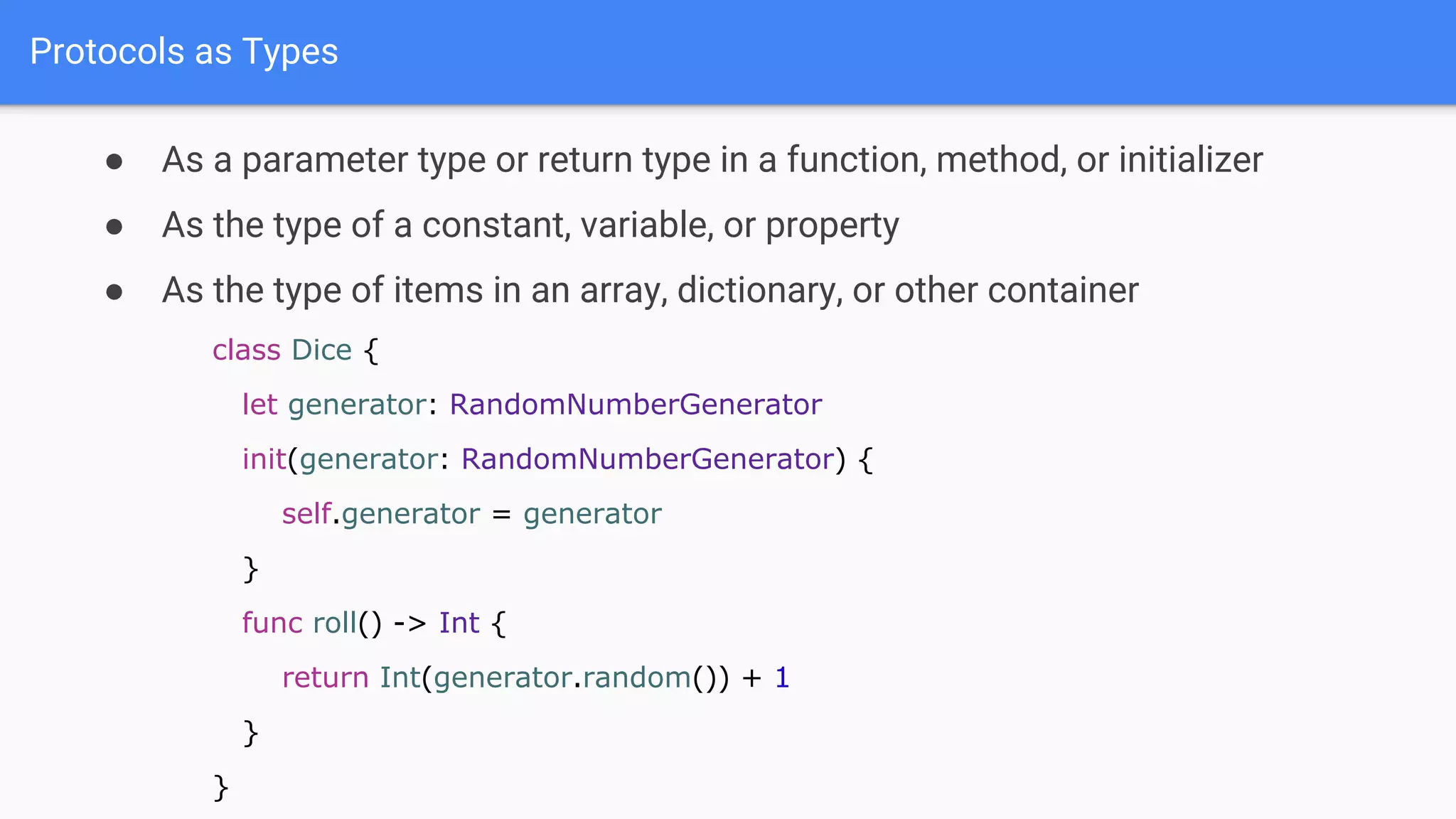
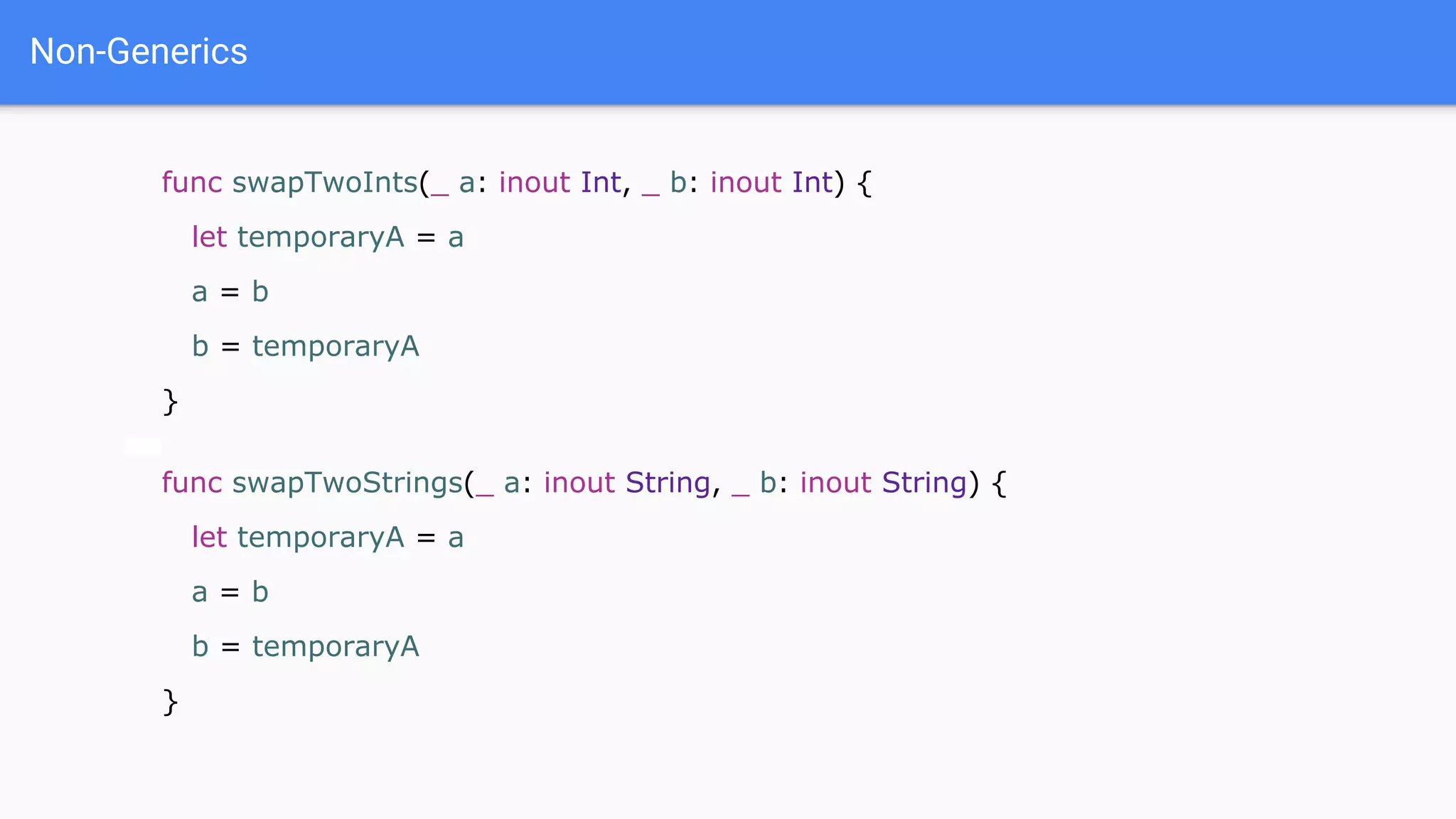
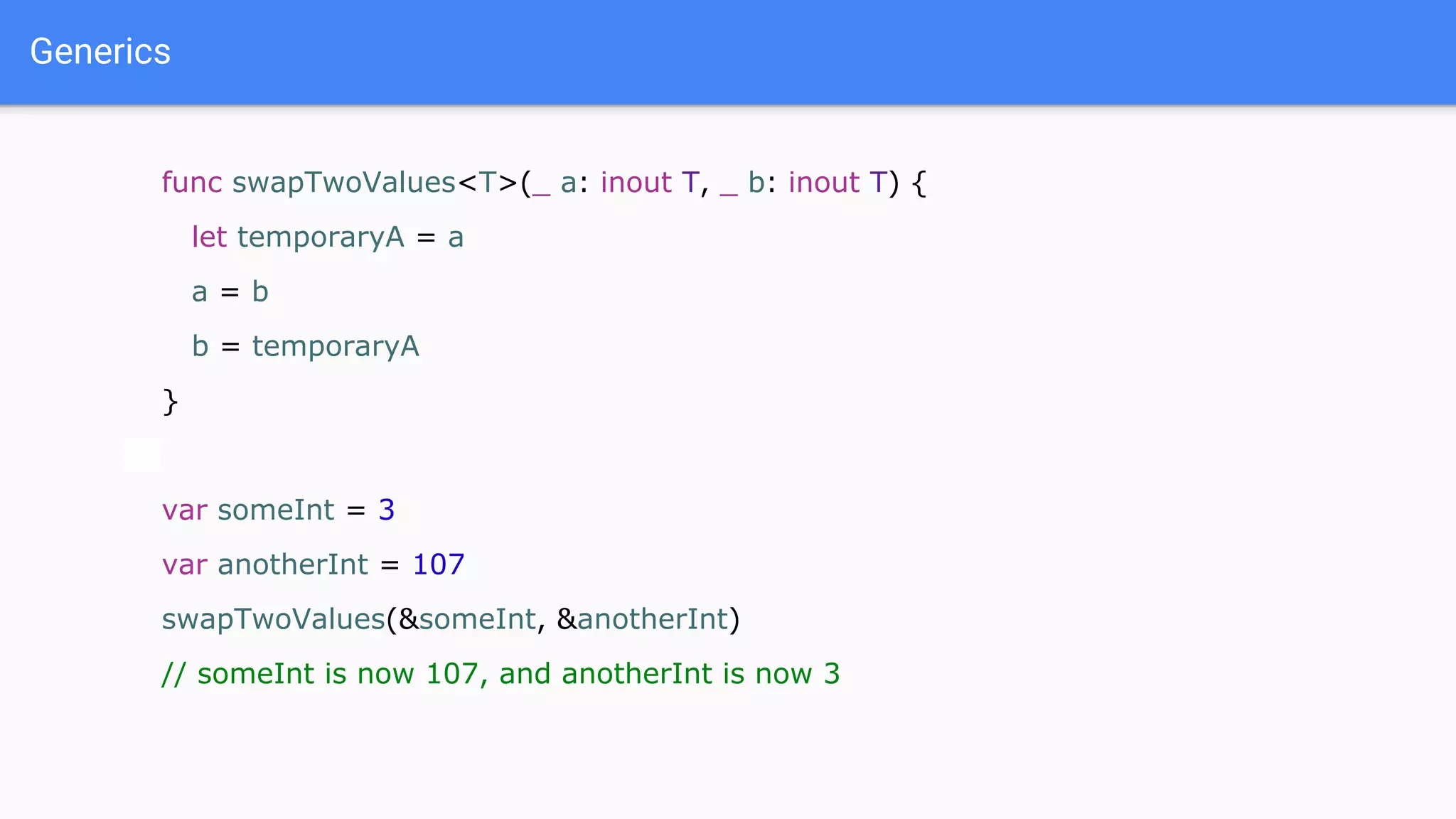
![Non-Generics Stack
struct IntStack {
var items = [Int]()
mutating func push(_ item: Int) {
items.append(item)
}
mutating func pop() -> Int {
return items.removeLast()
}
}](https://image.slidesharecdn.com/fromandroid2fjavatoswift3-180706025444/75/From-android-java-to-swift-3-38-2048.jpg)
![Generic Stack
struct Stack<Element> {
var items = [Element]()
mutating func push(_ item: Element) {
items.append(item)
}
mutating func pop() -> Element {
return items.removeLast()
}
}](https://image.slidesharecdn.com/fromandroid2fjavatoswift3-180706025444/75/From-android-java-to-swift-3-39-2048.jpg)
